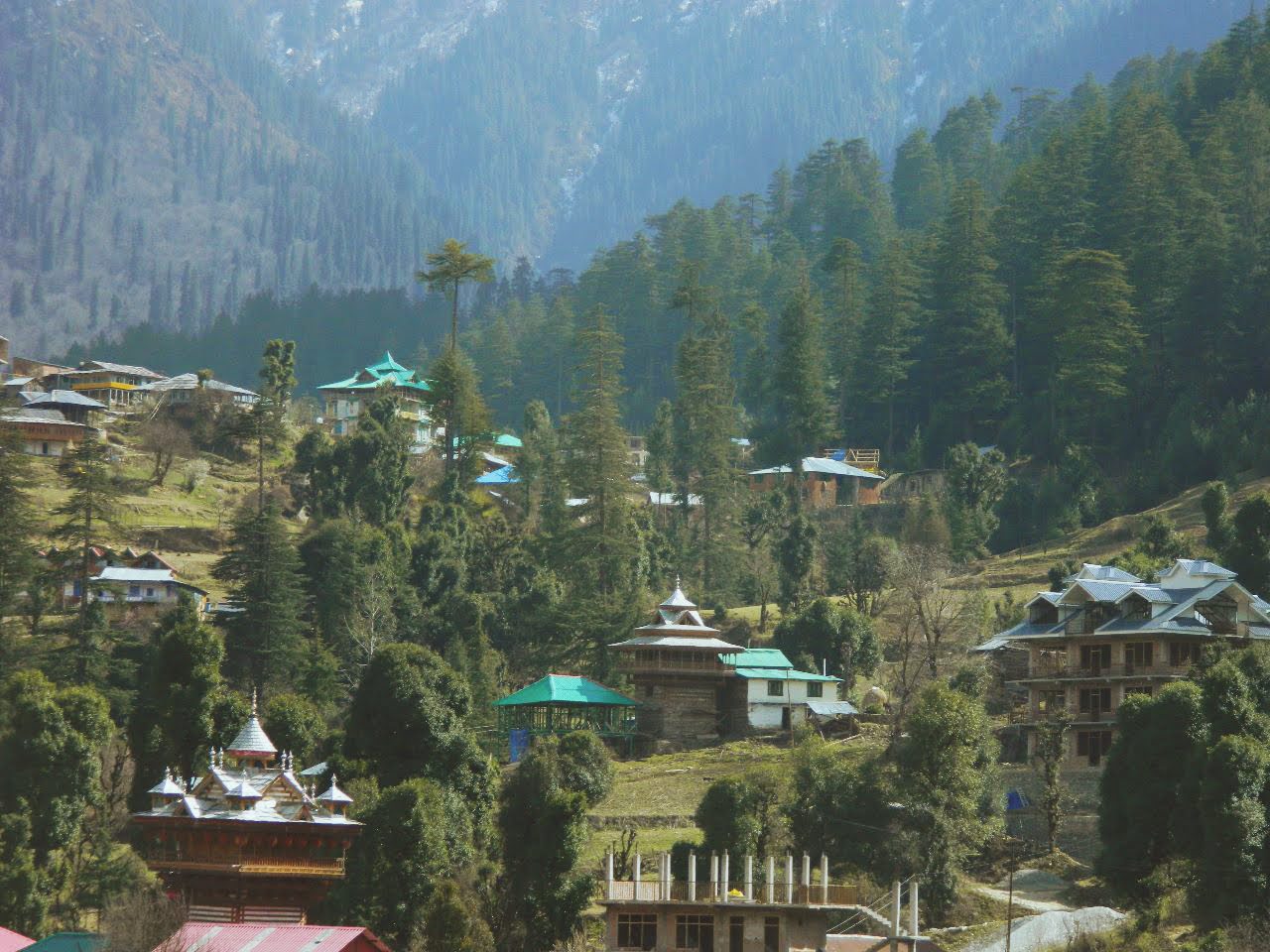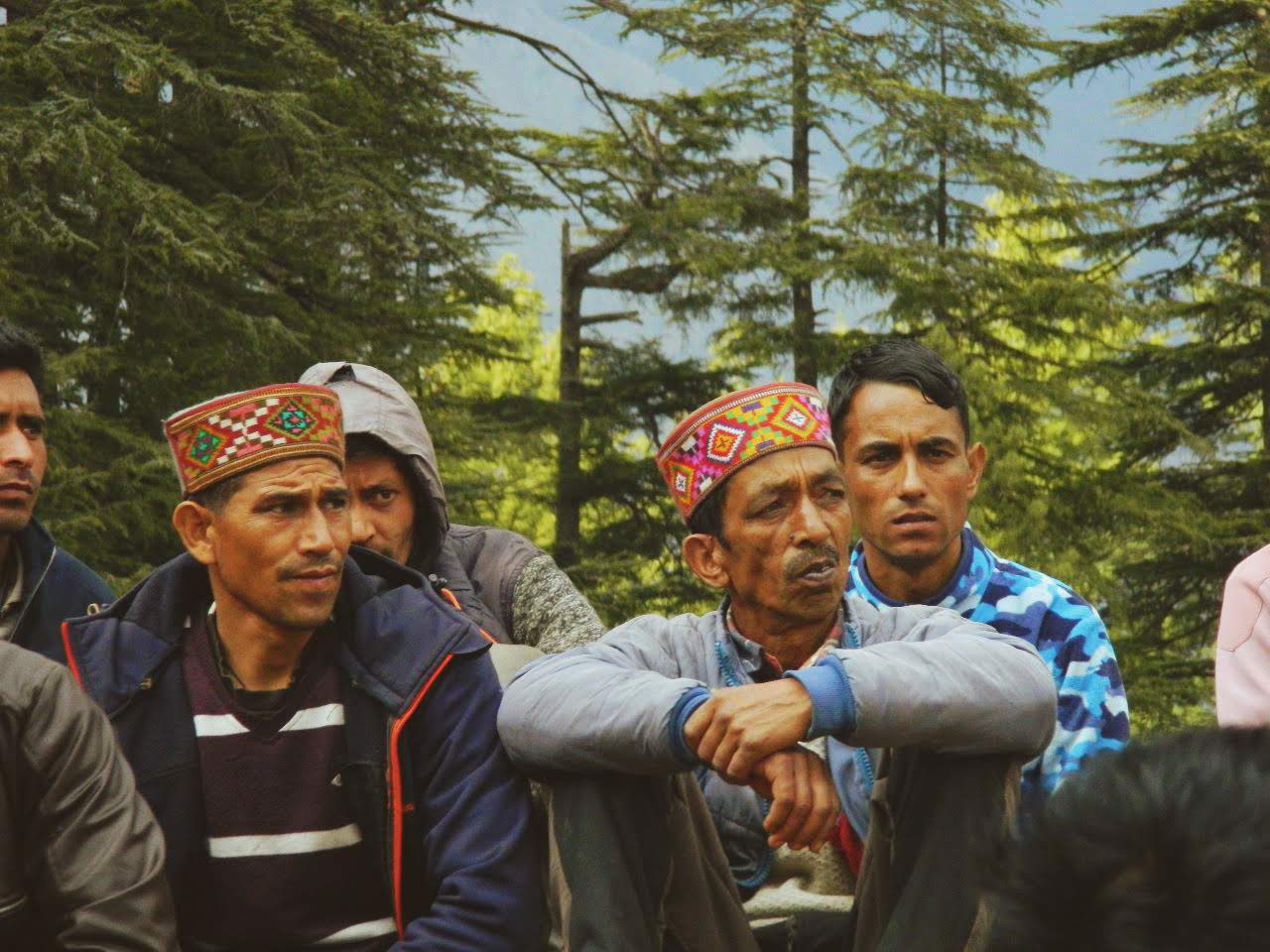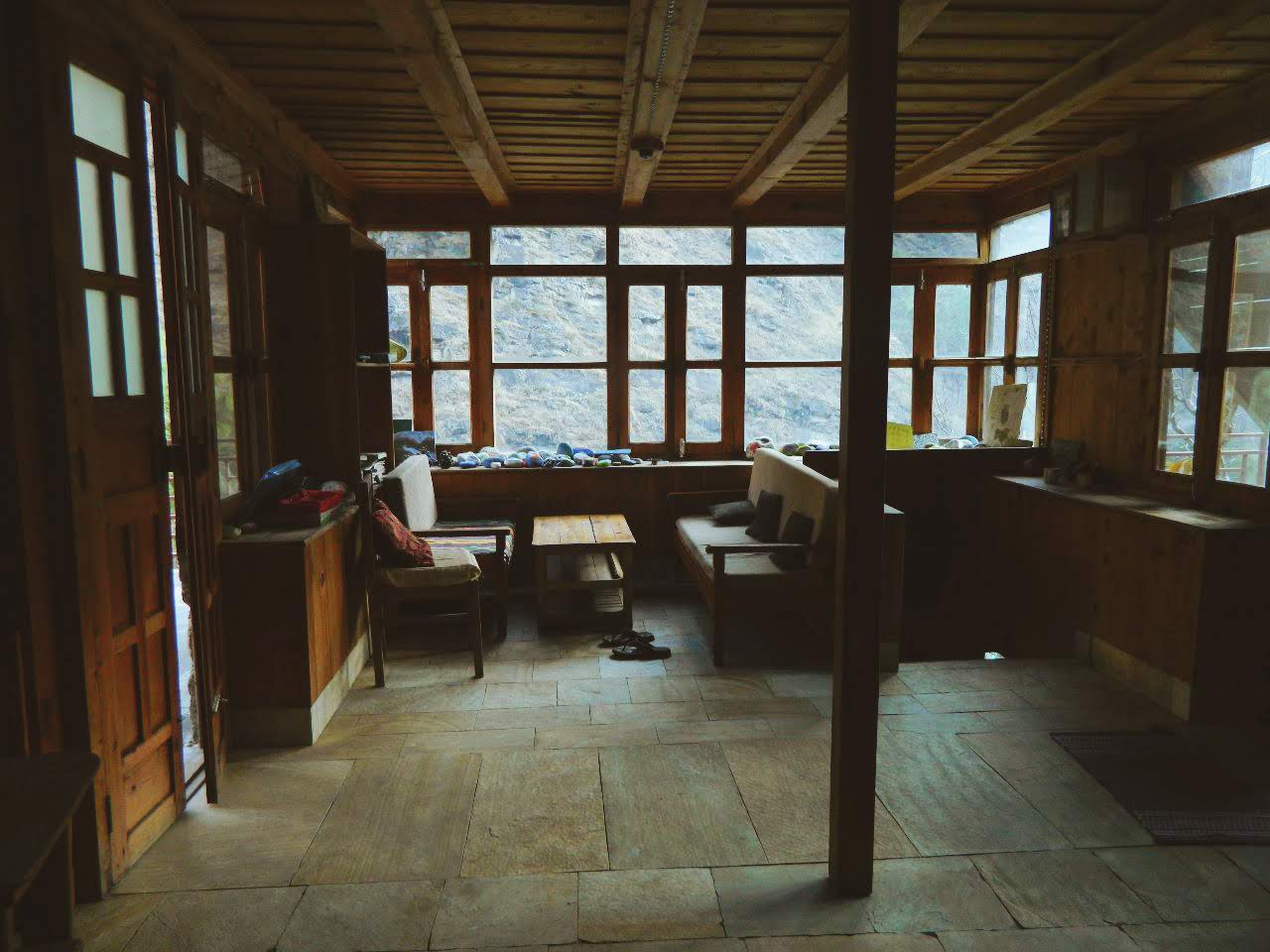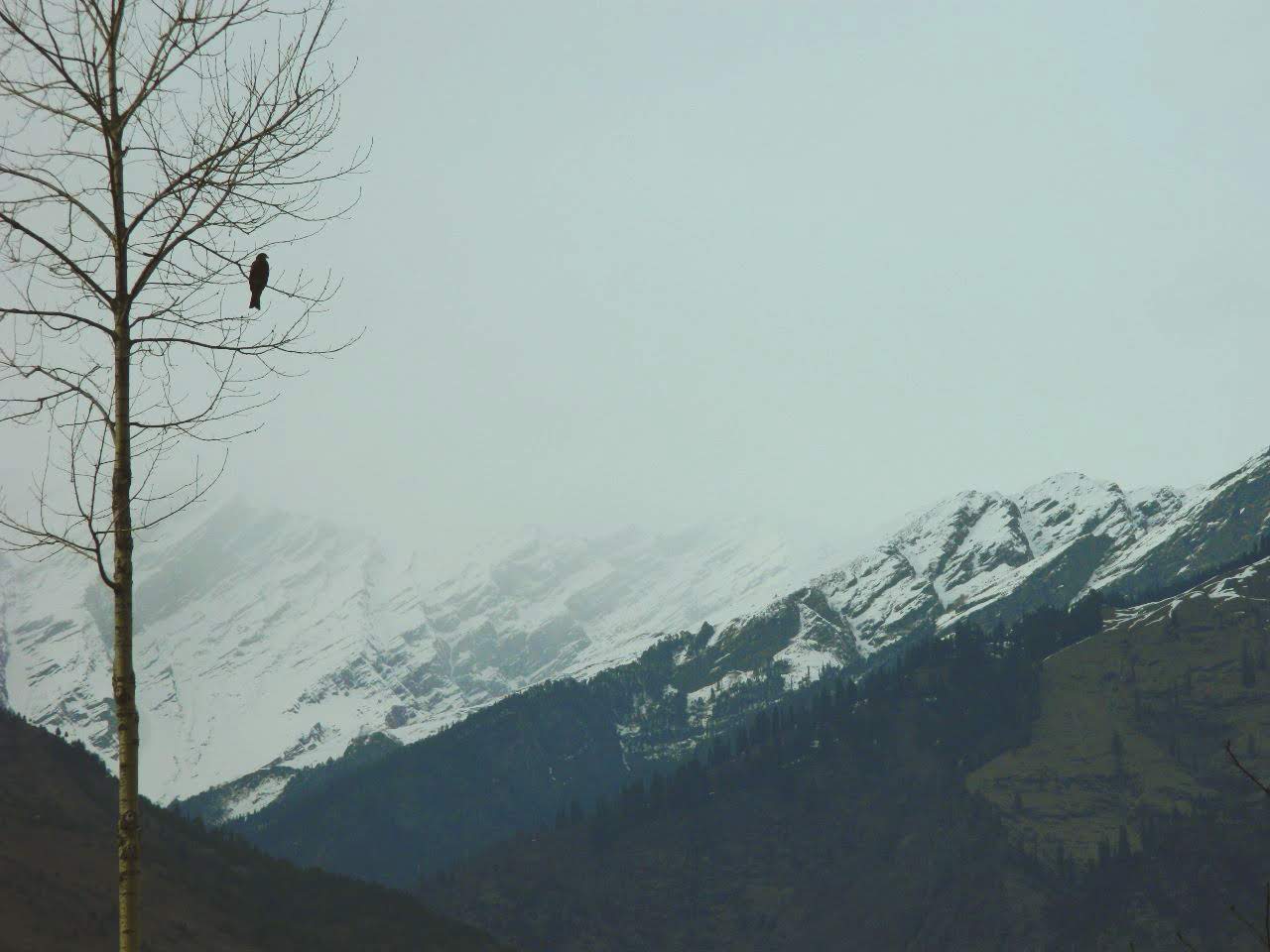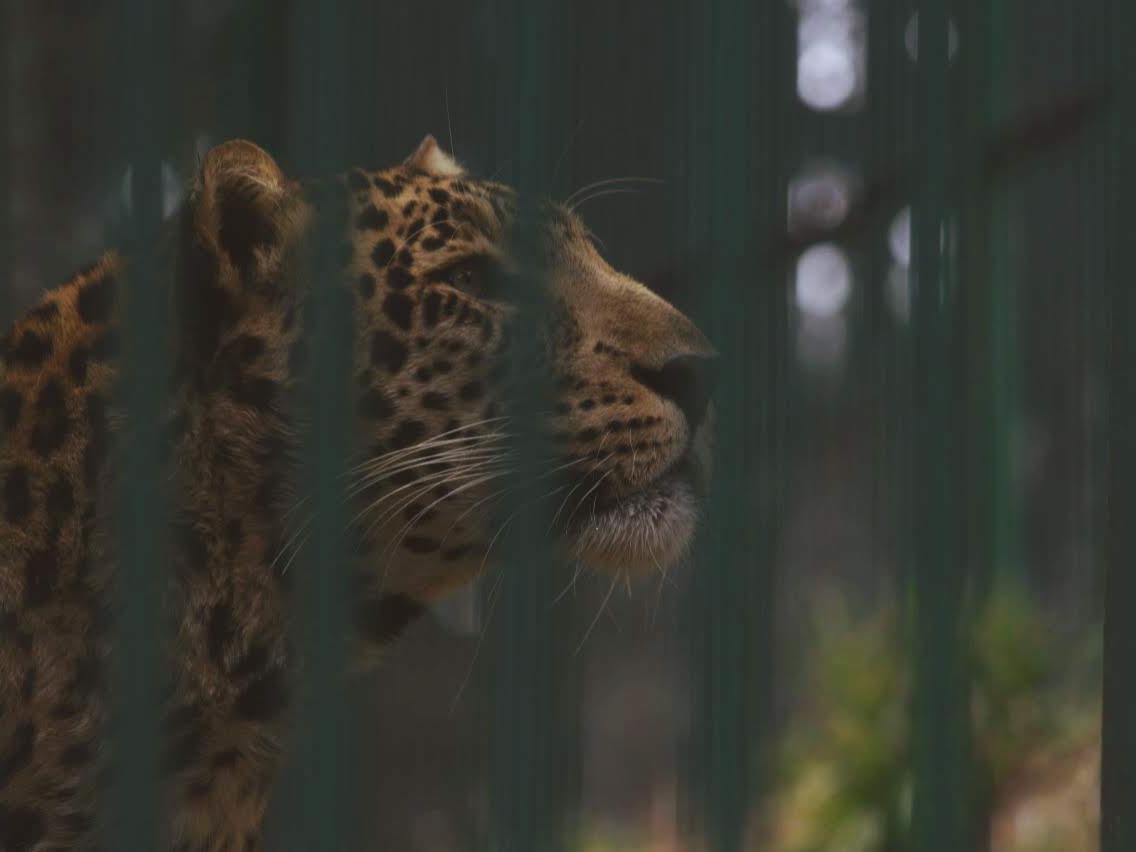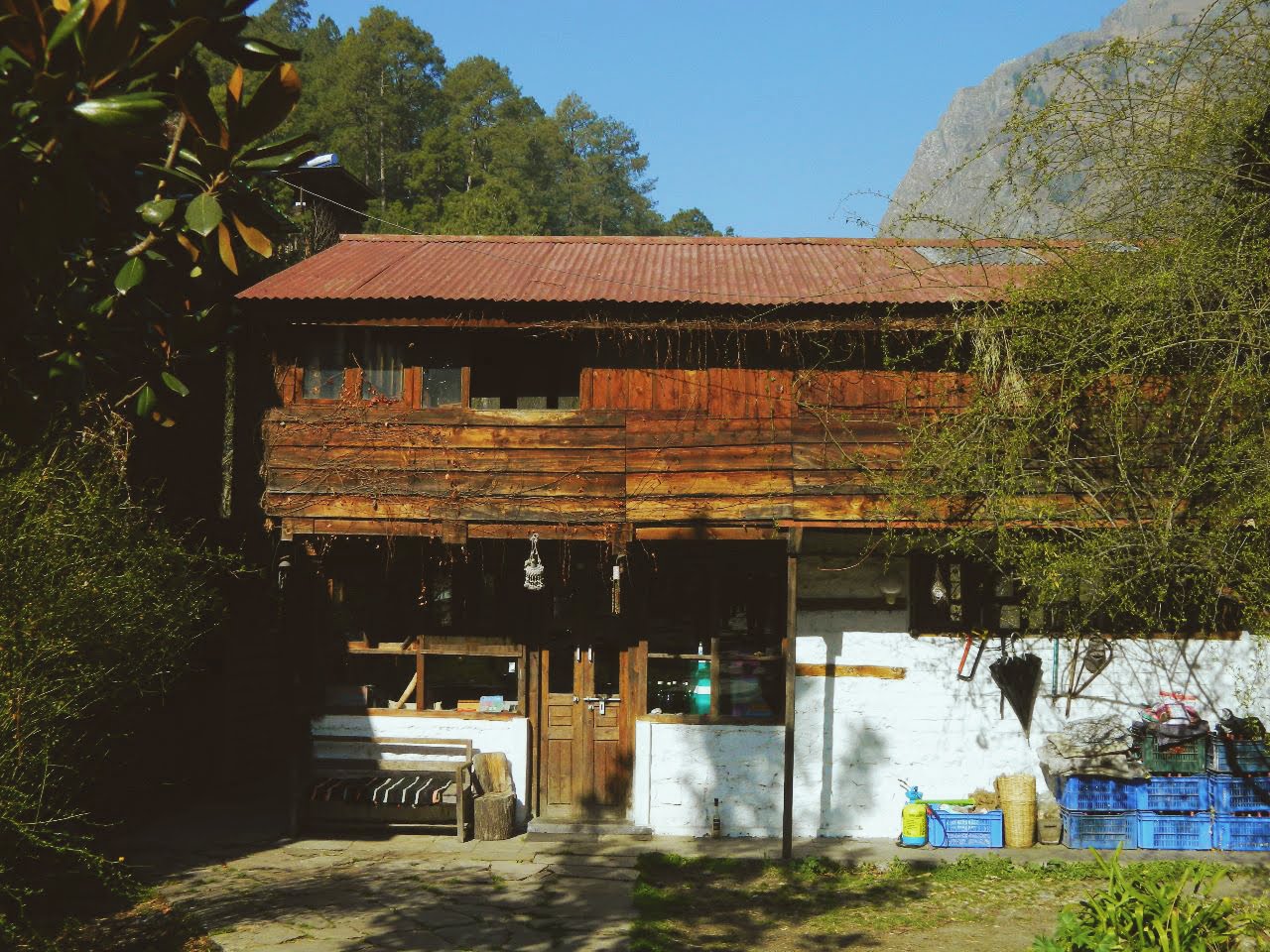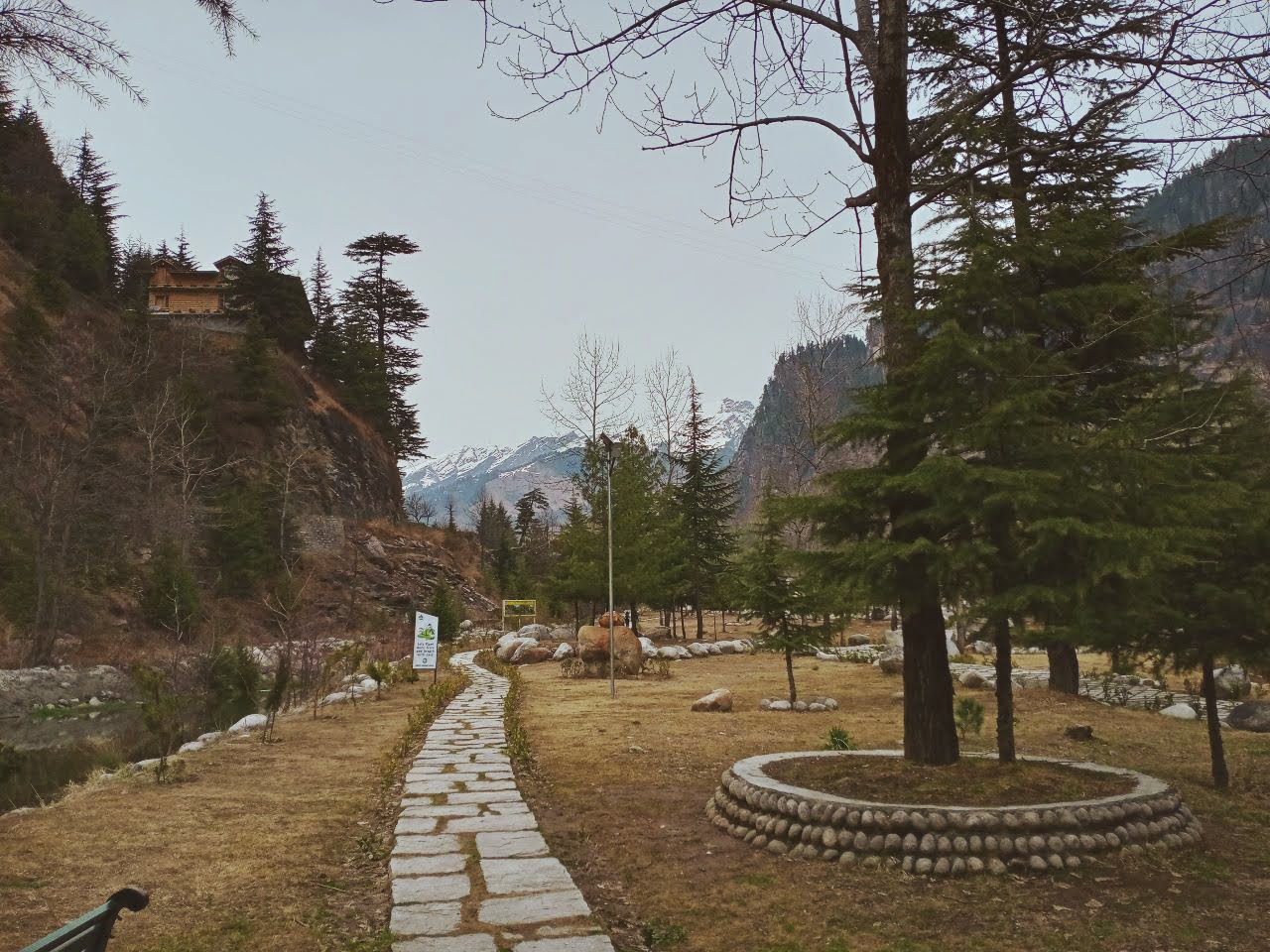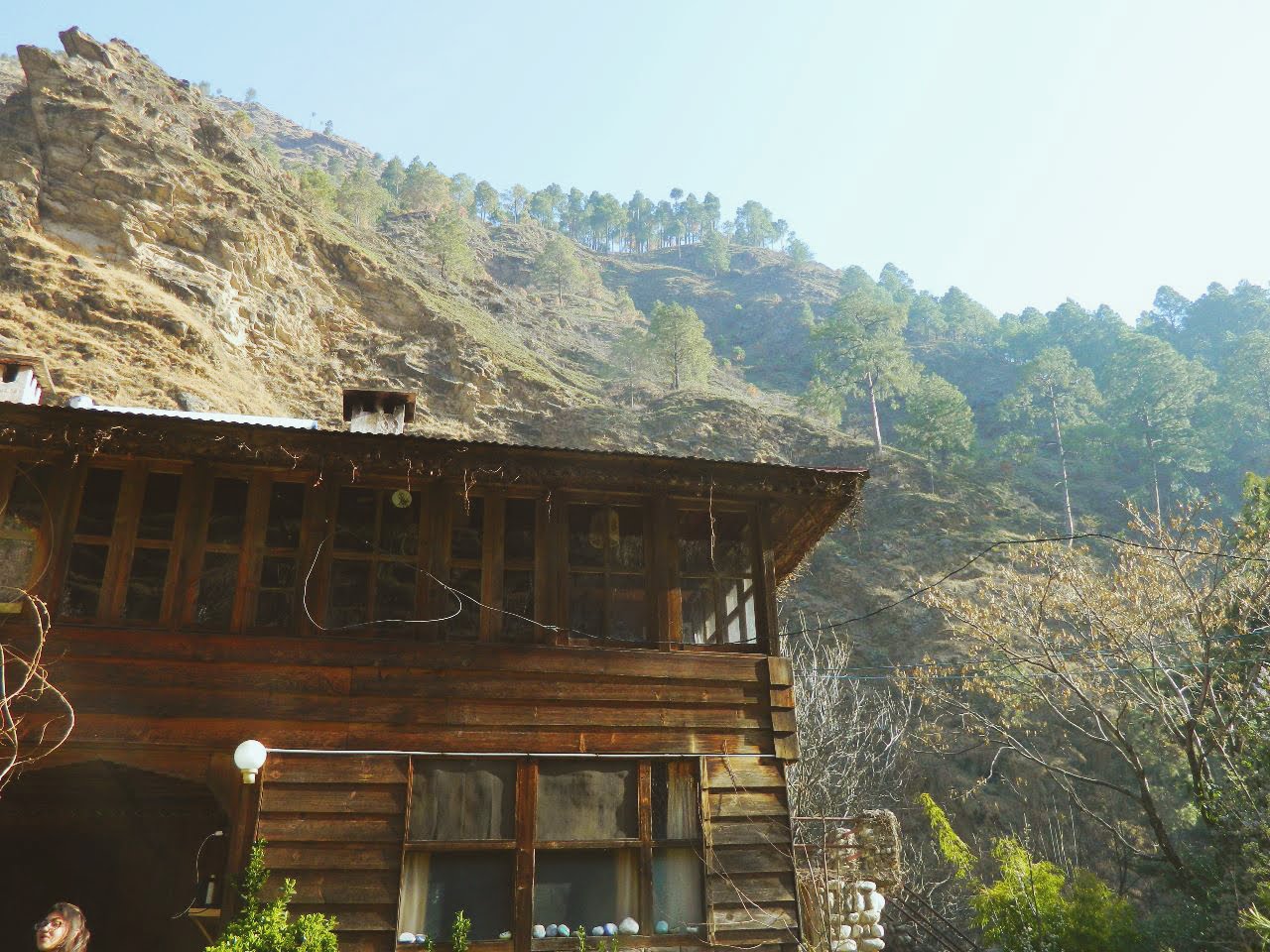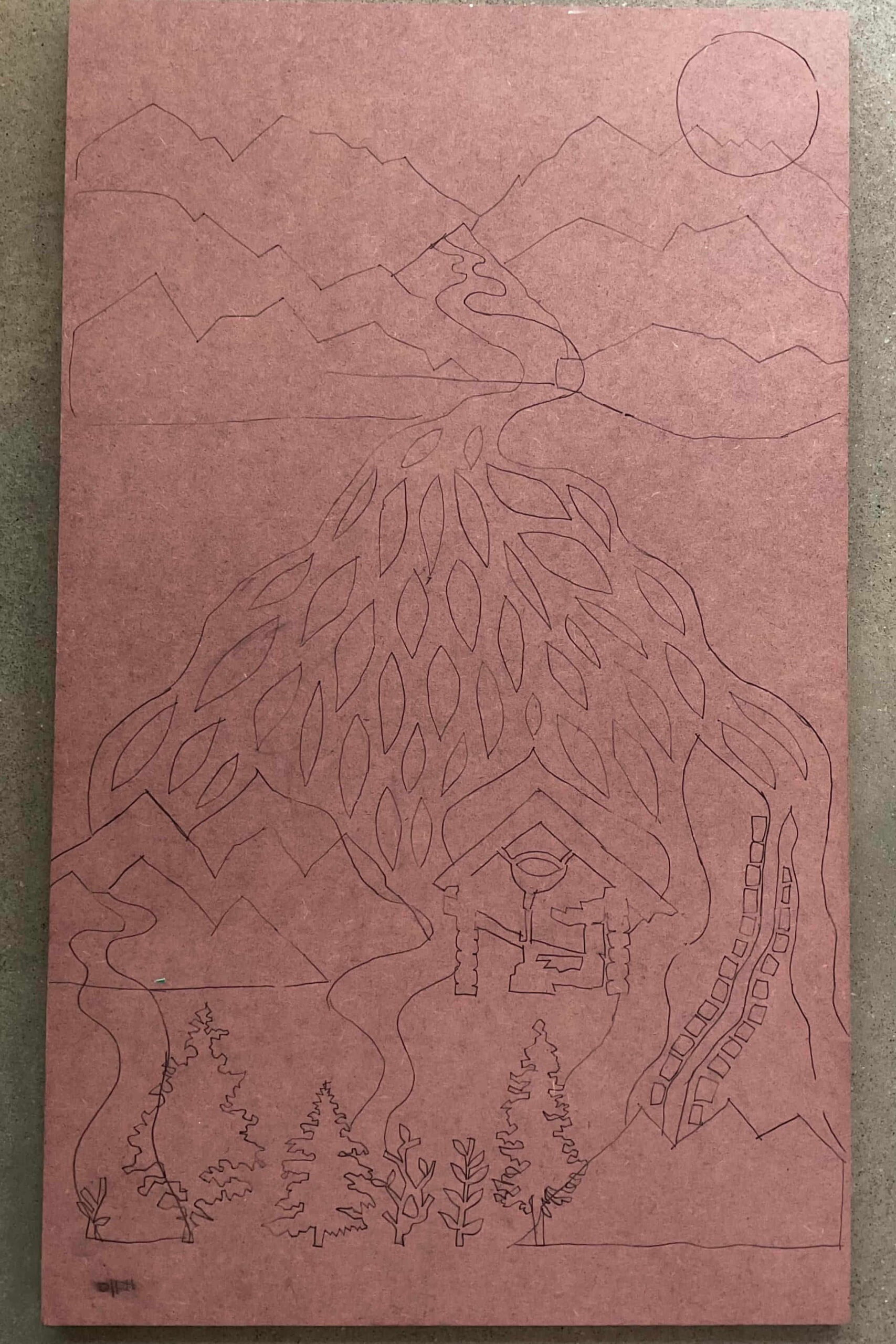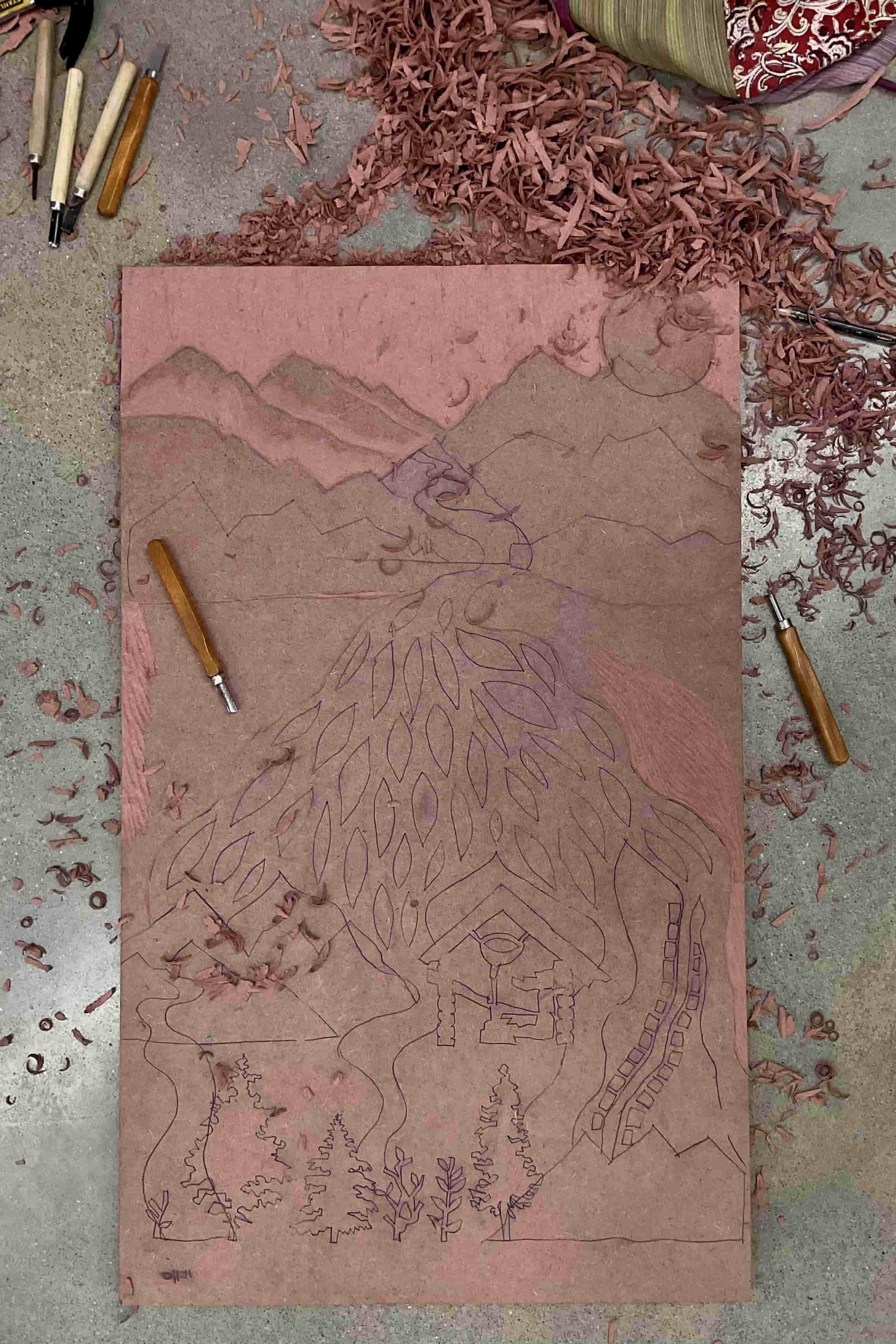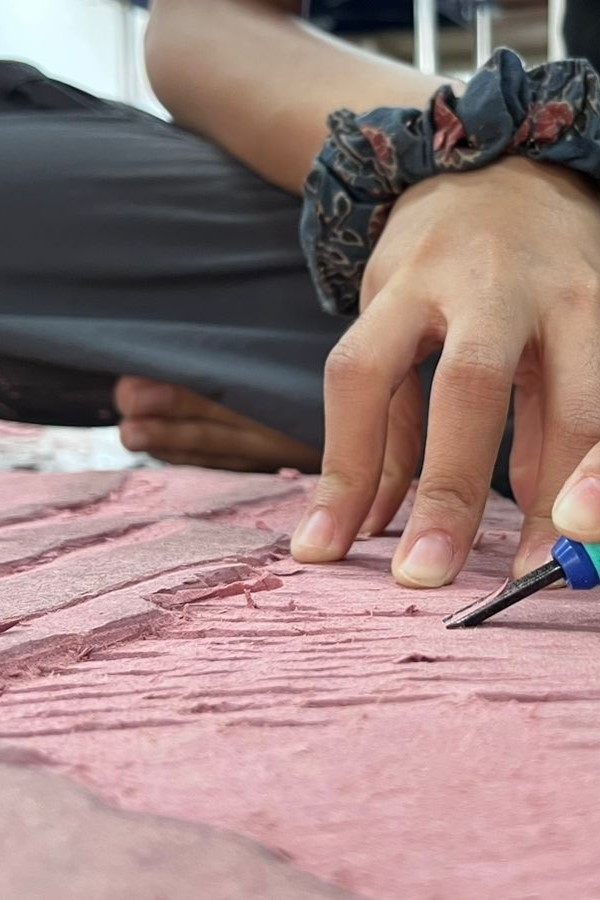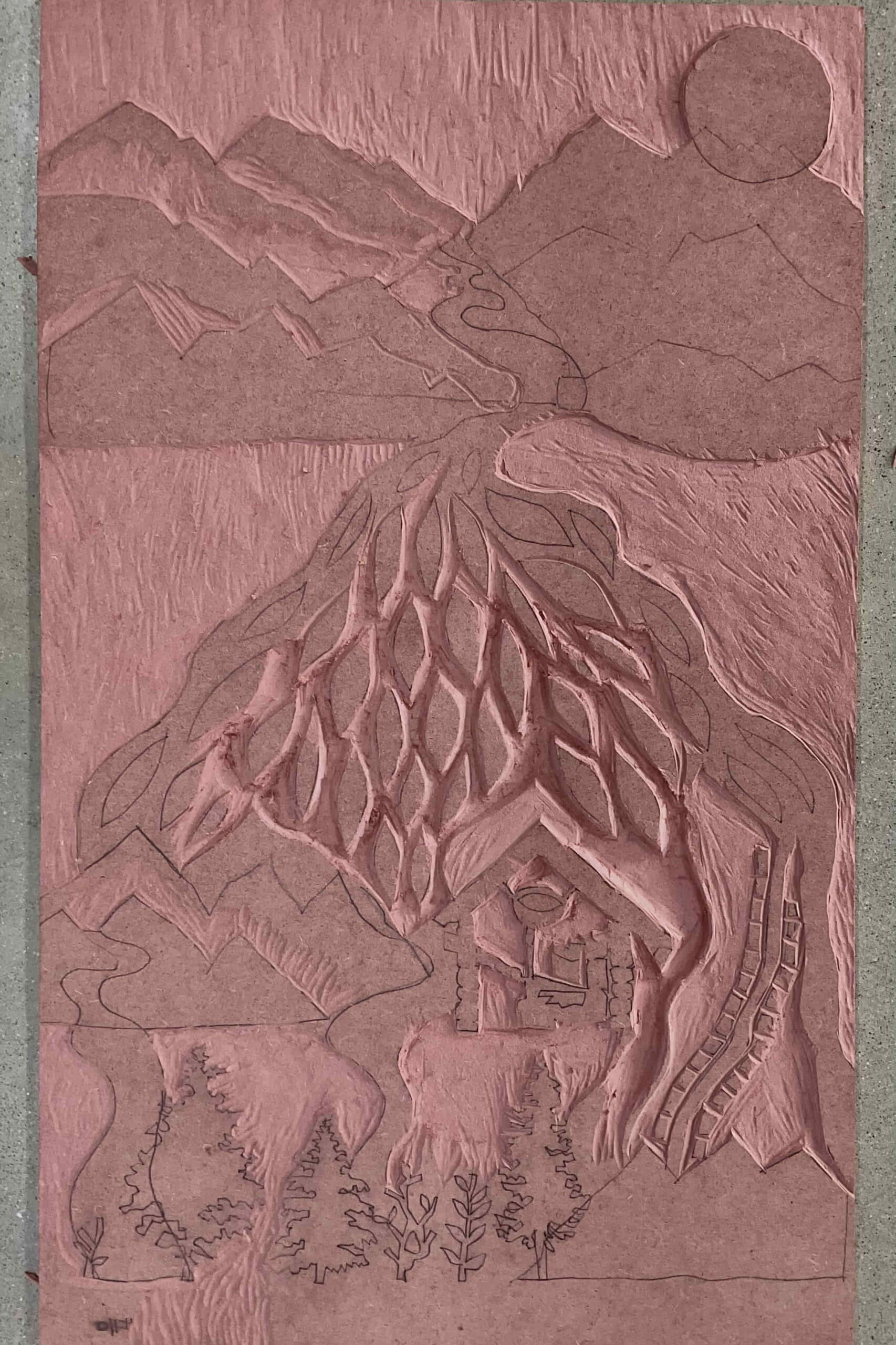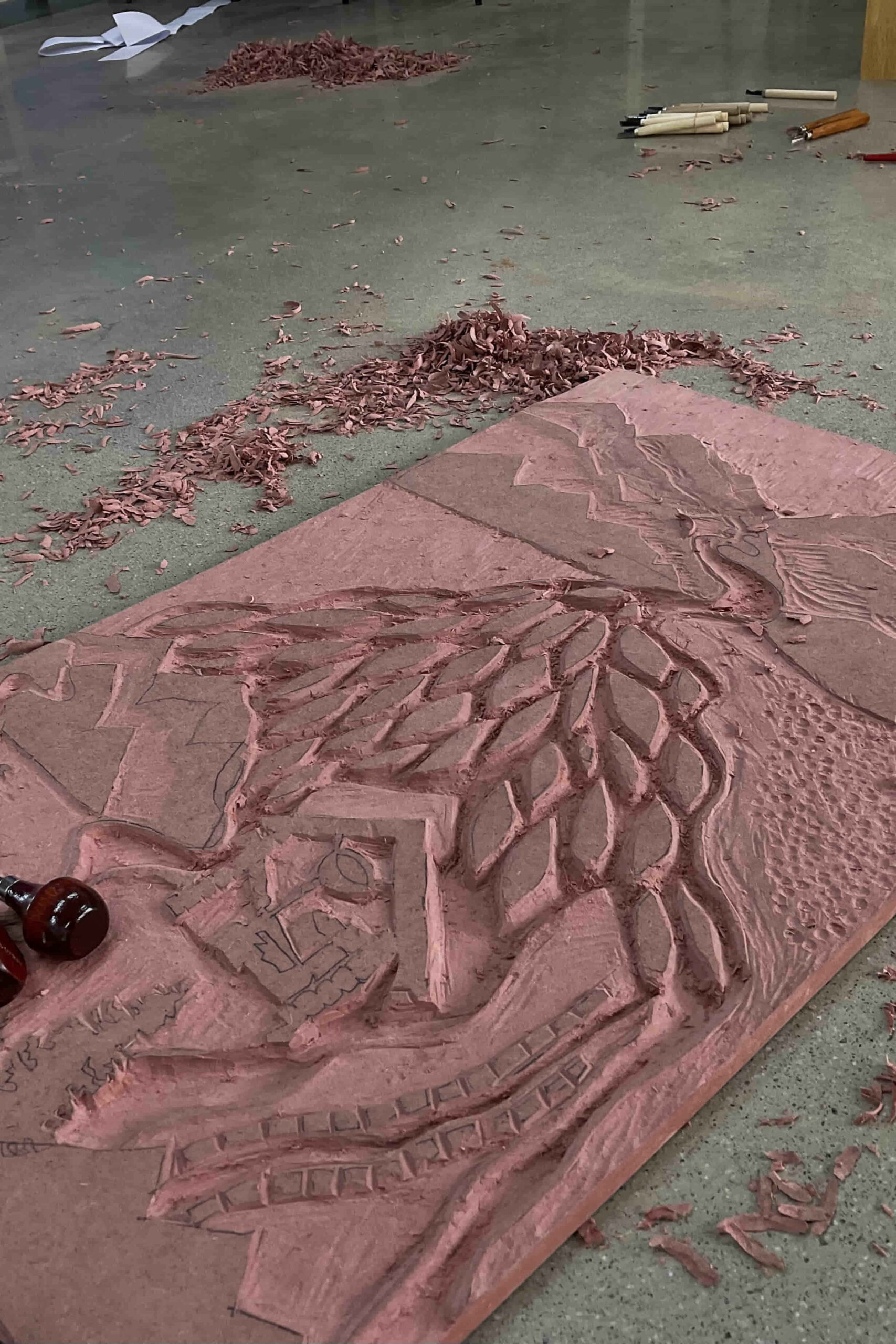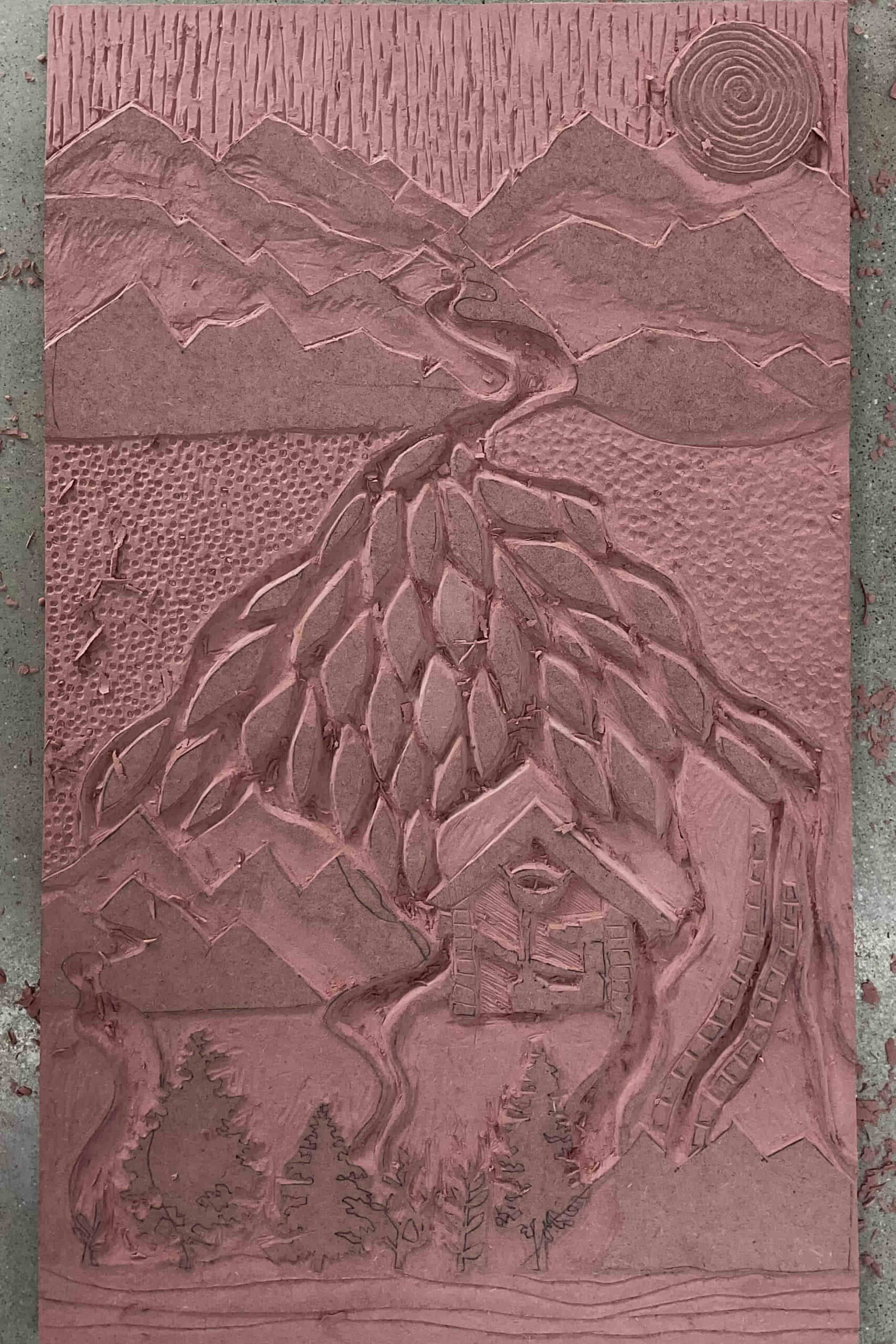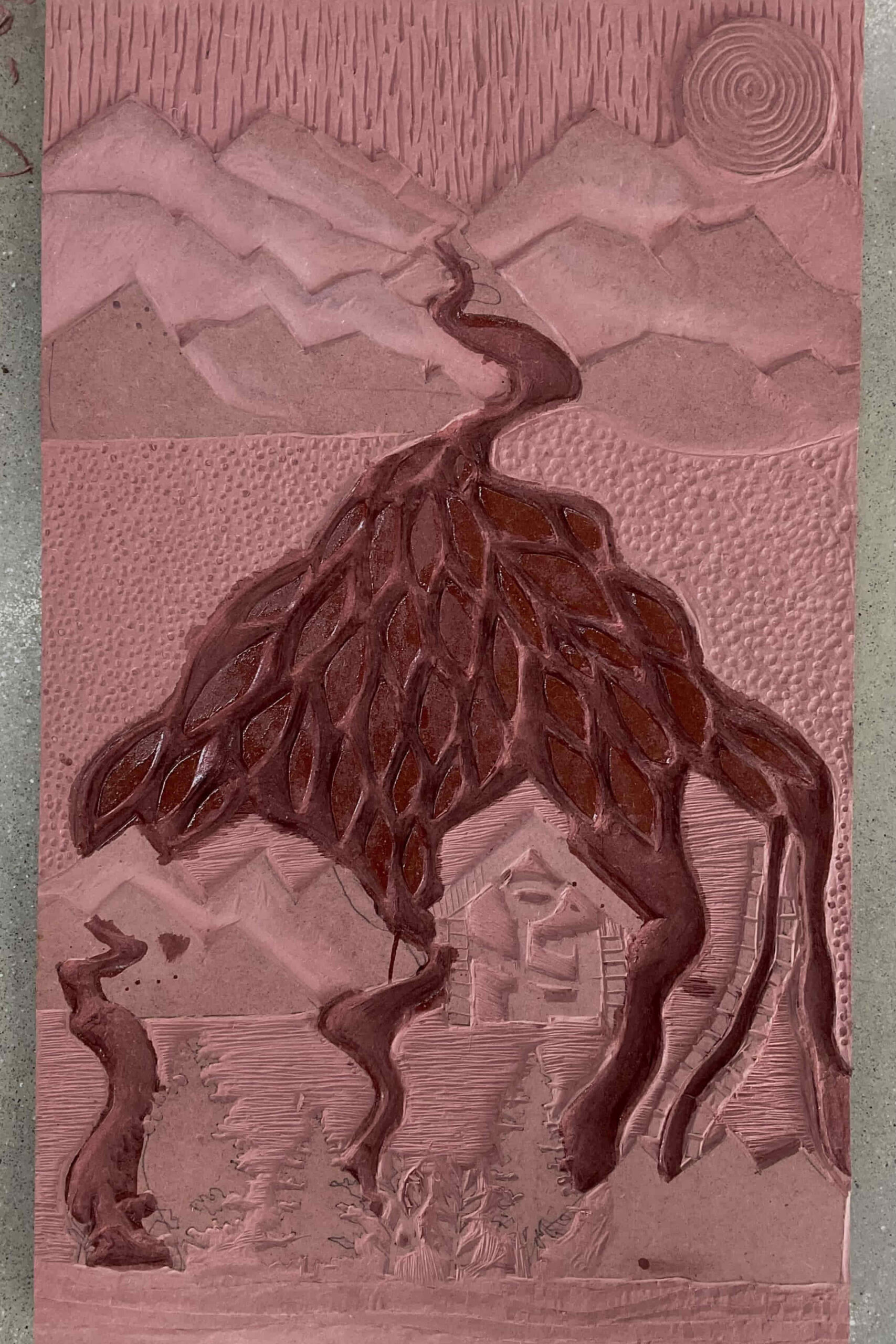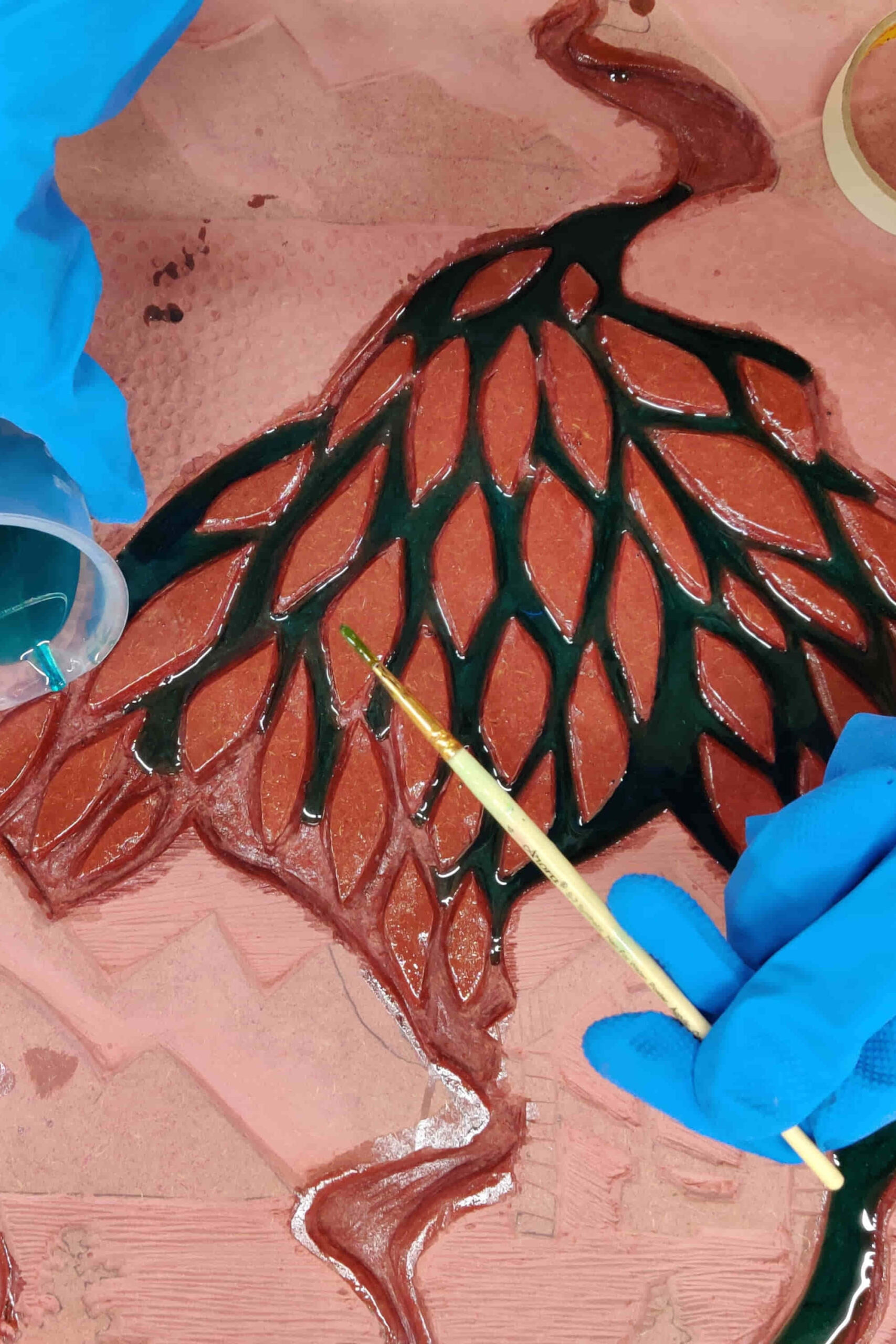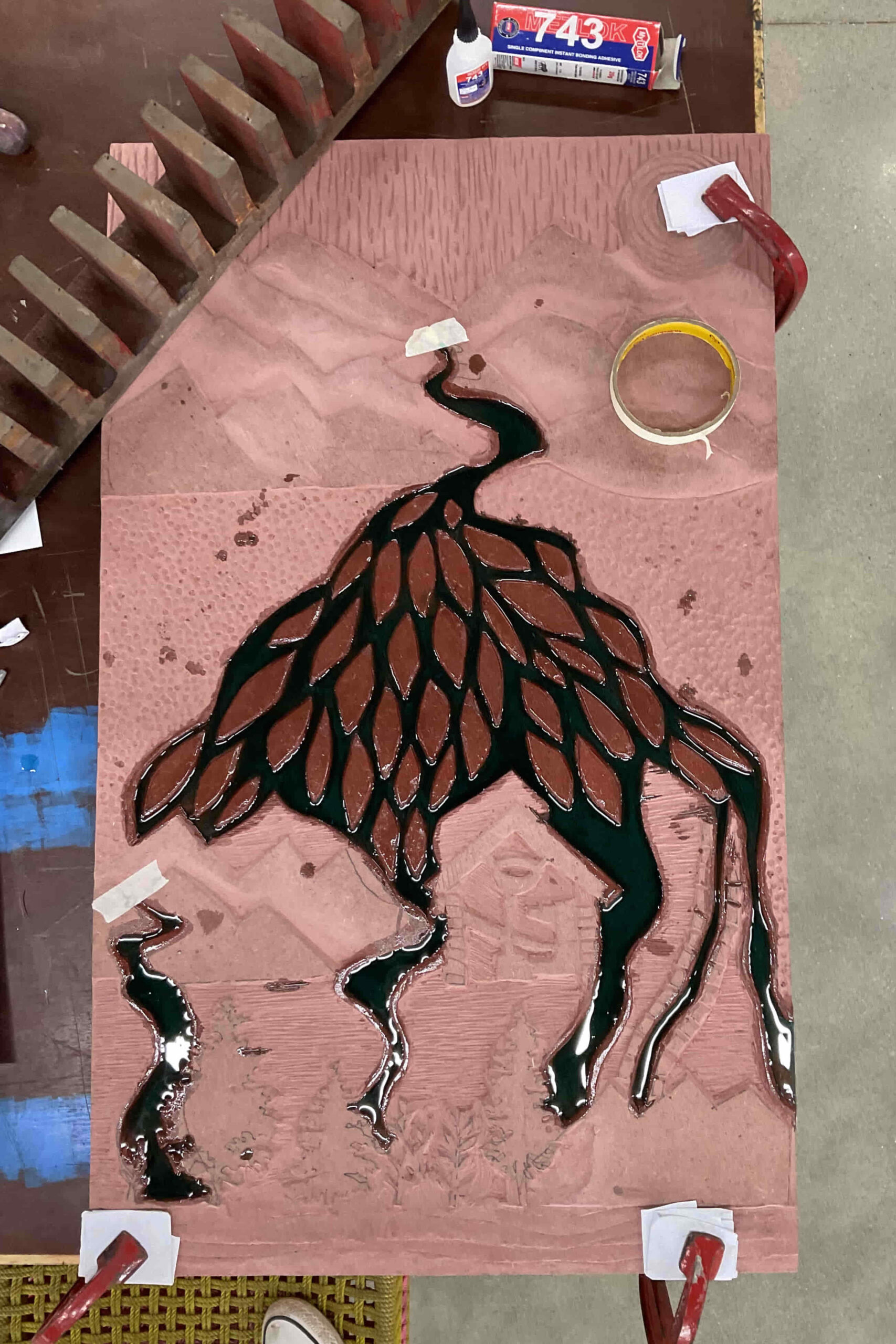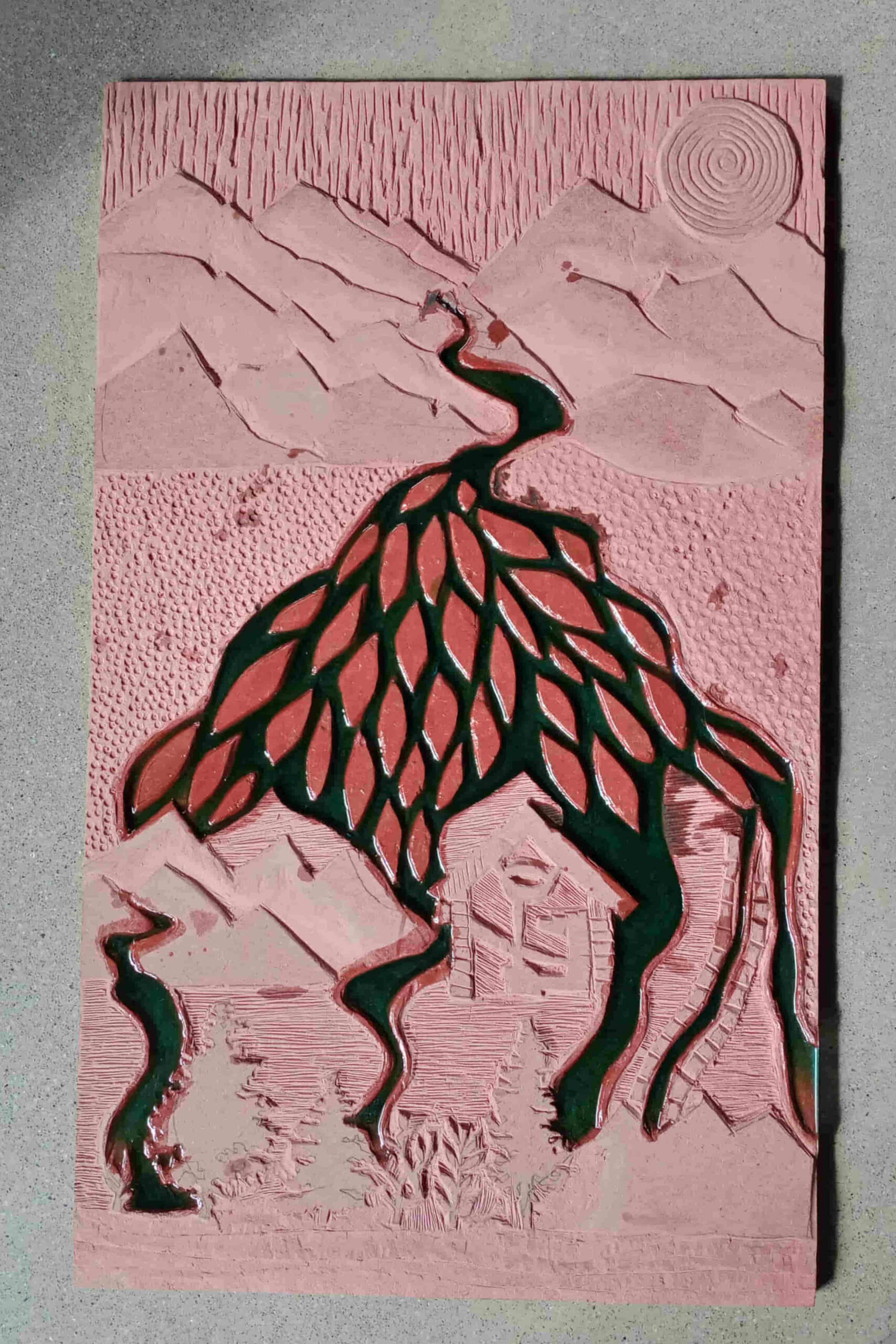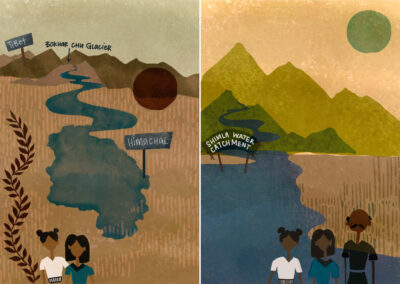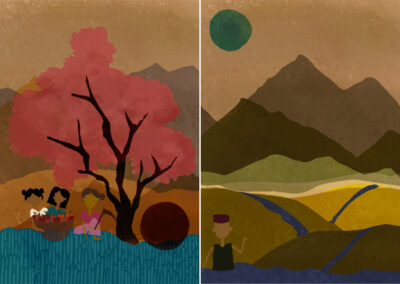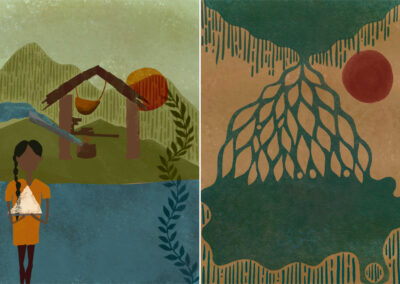Thesis Project
The Mind Over Water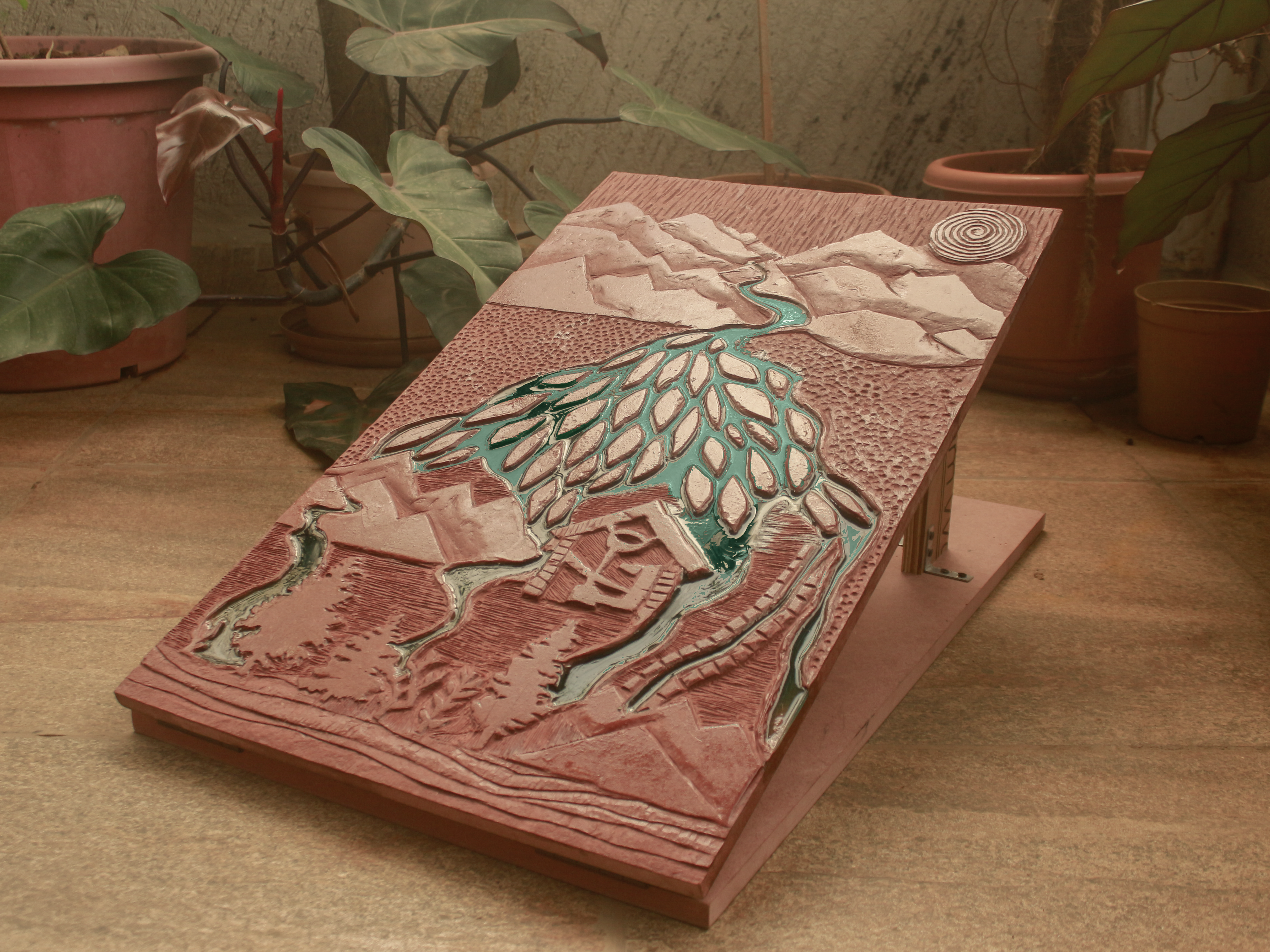
The work displayed is a 7.5 ft x 4.5 ft installation depicting the arrival of water from the Tibetan Glaciers through the Indus River into Himachal and further displaying its interaction with the state’s culture This is divided into 3 larger ideas:
• Water and Livelihood (Kuhl irrigation, apples, apricot and rhododendron cultivation)
• Water and Power/Energy (Gharat systems)
• Water and Biodiversity (Himachal’s forests and national parks, primary research taken from the Shimla water catchment)
The aim was to create an experience for the viewer around water as an idea, and an entity. To change viewers’ perceptions and intensify their reactions to the art’s physical space. To appreciate the different ways water takes form has its own agency and is not just a natural resource for human benefit. My installation was accompanied by an infographic board and zine, explaining water’s relation to Himachal culture. It visually communicated the different ways people interpret water culturally, socially, scientifically, economically and sustainably.
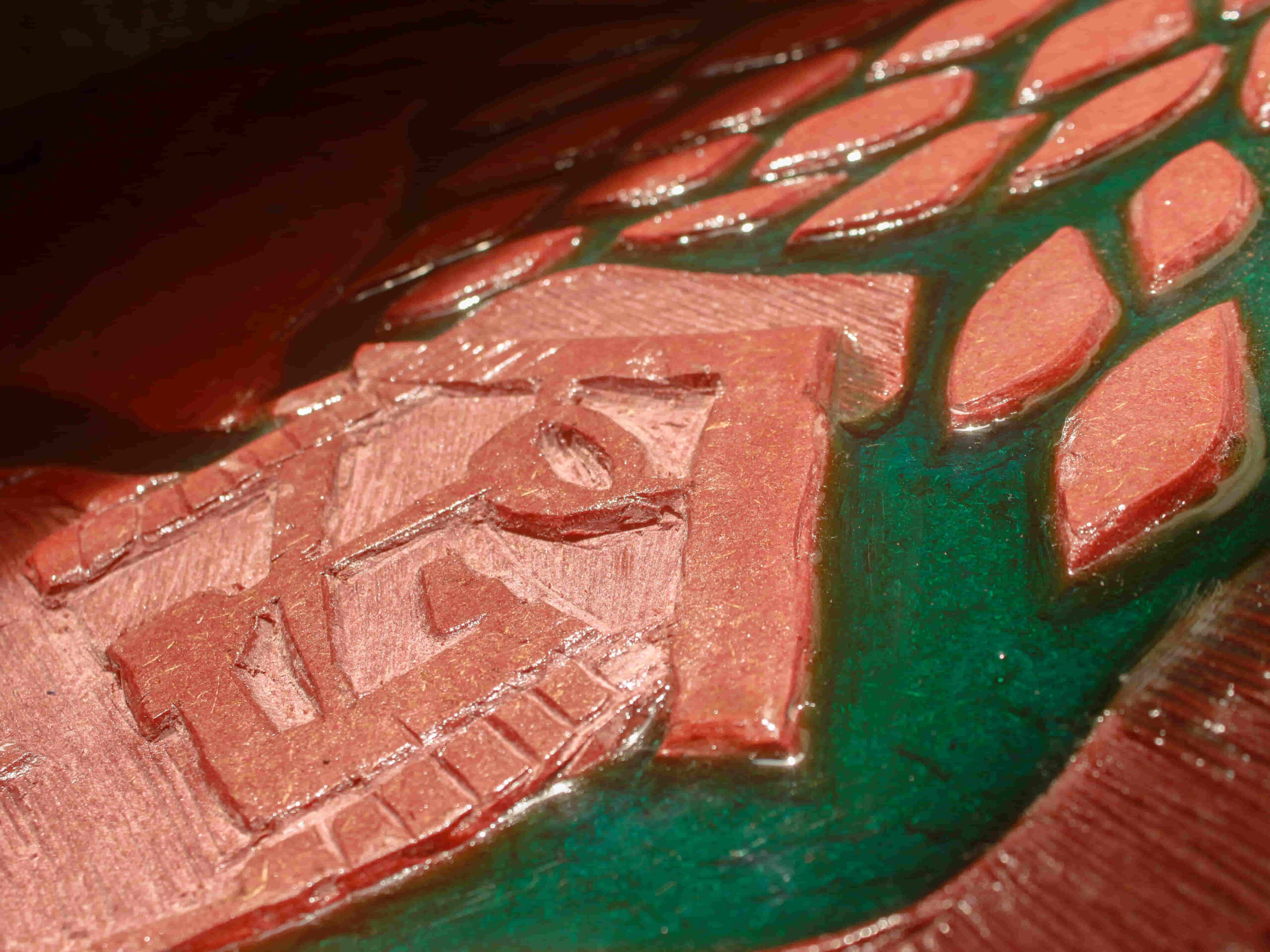
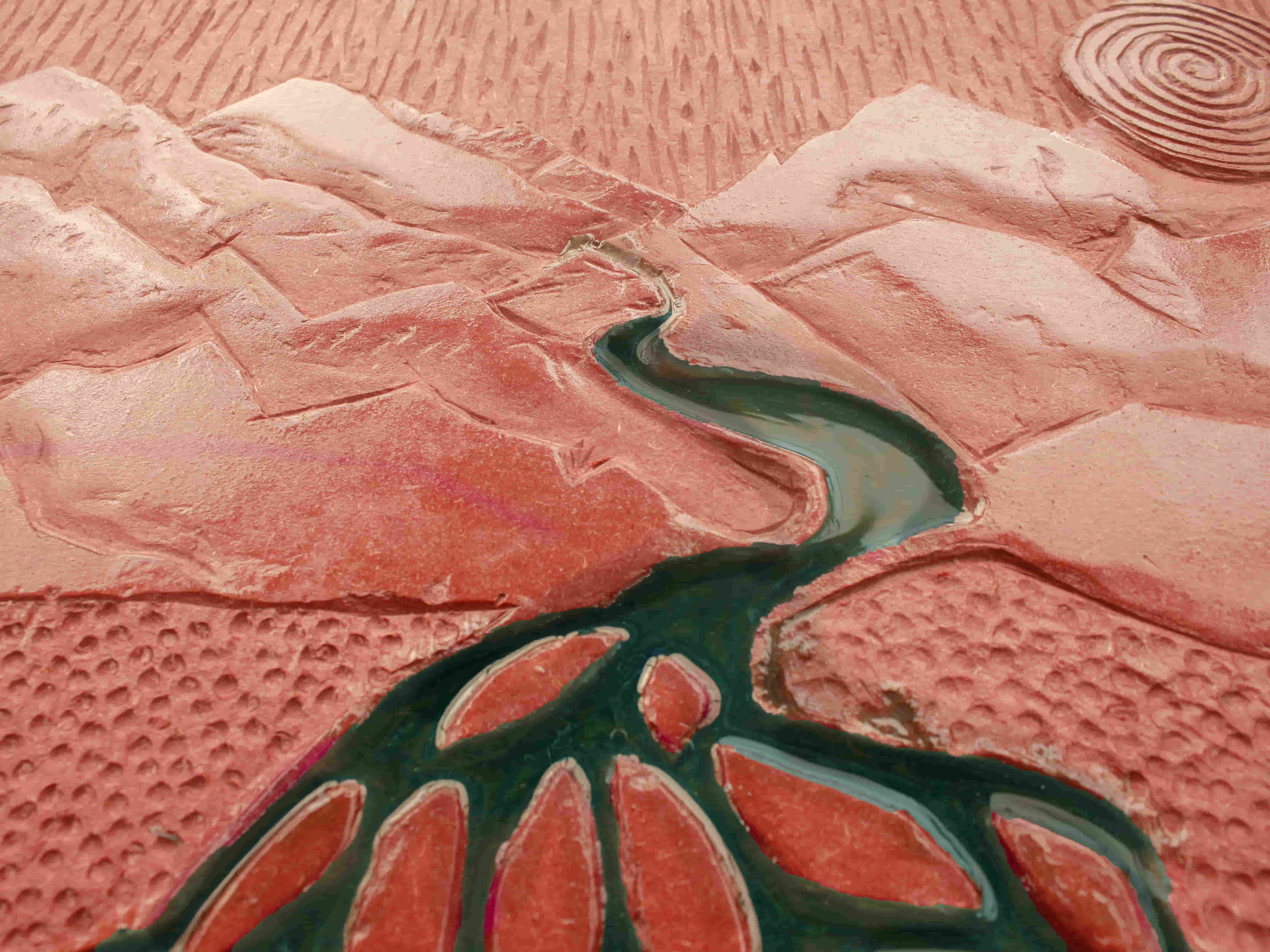

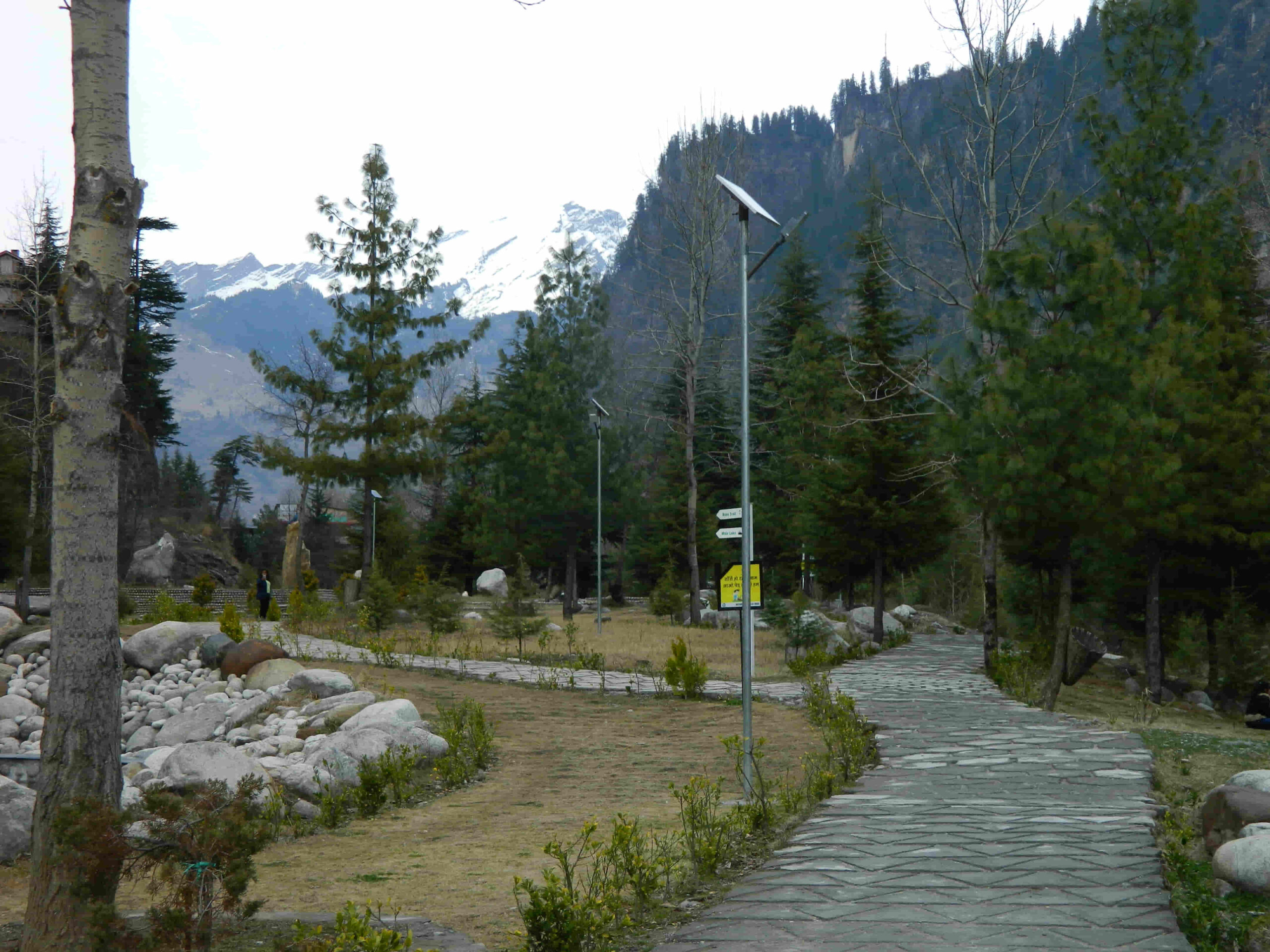
Where It All Began
The project was situated at the Beas Bihal Nature Park, located in Old Manali. The park is located on the right bank of the river Beas. It is situated in a newly constructed Nature Park that manifested into reality owing to the efforts of an IFS officer Aishwarya Raj. The idea to start
this project was initiated in the year 2018.
A wasteland of 15 hectares area along River Beas in Old Manali was to be eco-restored into a Nature park that along with being a scenic, green zone for locals/tourists, would also provide livelihood opportunities to the locals of Old Manali. The DPR of the project was submitted by Neeraj Chadha, DCF Kullu, then in the year 2018-19 and was approved by the Government of India.
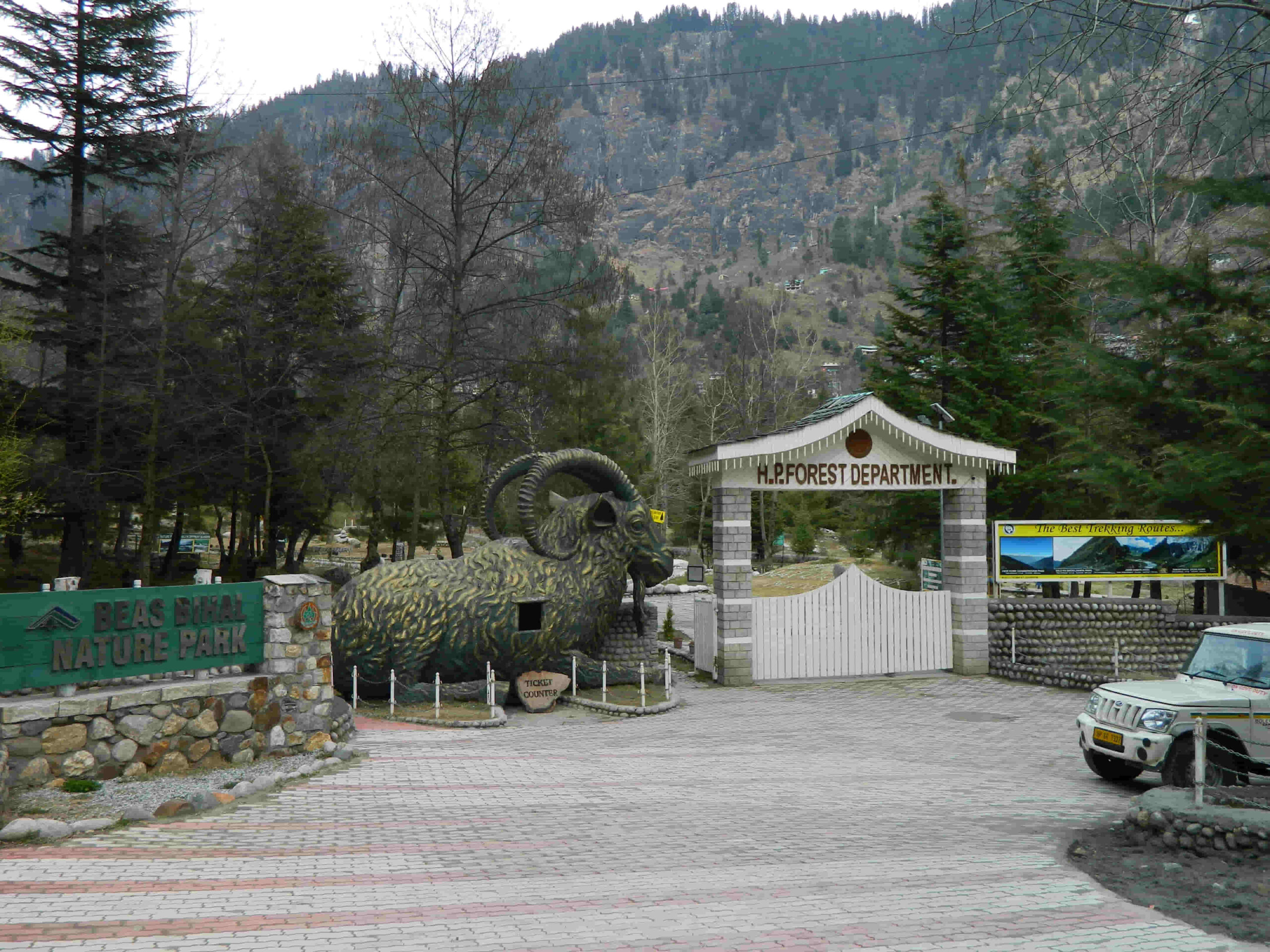
Additionally, I wished to better understand the importance of Forest Ecosystem Services and ideate on a project which best communicated the forest as a value in itself, and then to human beings.
The project was inspired by the location of the park, surrounded by the Beas River. I wanted to take water as a concept forward because of its relevance to various ecosystems, people and environments. Understanding human impact on ecology and biodiversity is important.
I aimed to develop an idea into a tangible outcome from substantiated primary and secondary research, with no intention to educate my audience, but rather make the user value the traditional and local aspects of water in Himachal and instil an idea around water as a commodity. The idea is to bring about conversations about water and how it is an integral element of Himachali culture and biodiversity. For example, the importance of
water for biodiversity in the Shimla water catchment is one narrative and another could be the use of water for irrigation using the Kuhl systems.
The installation is thus an outcome of that process.
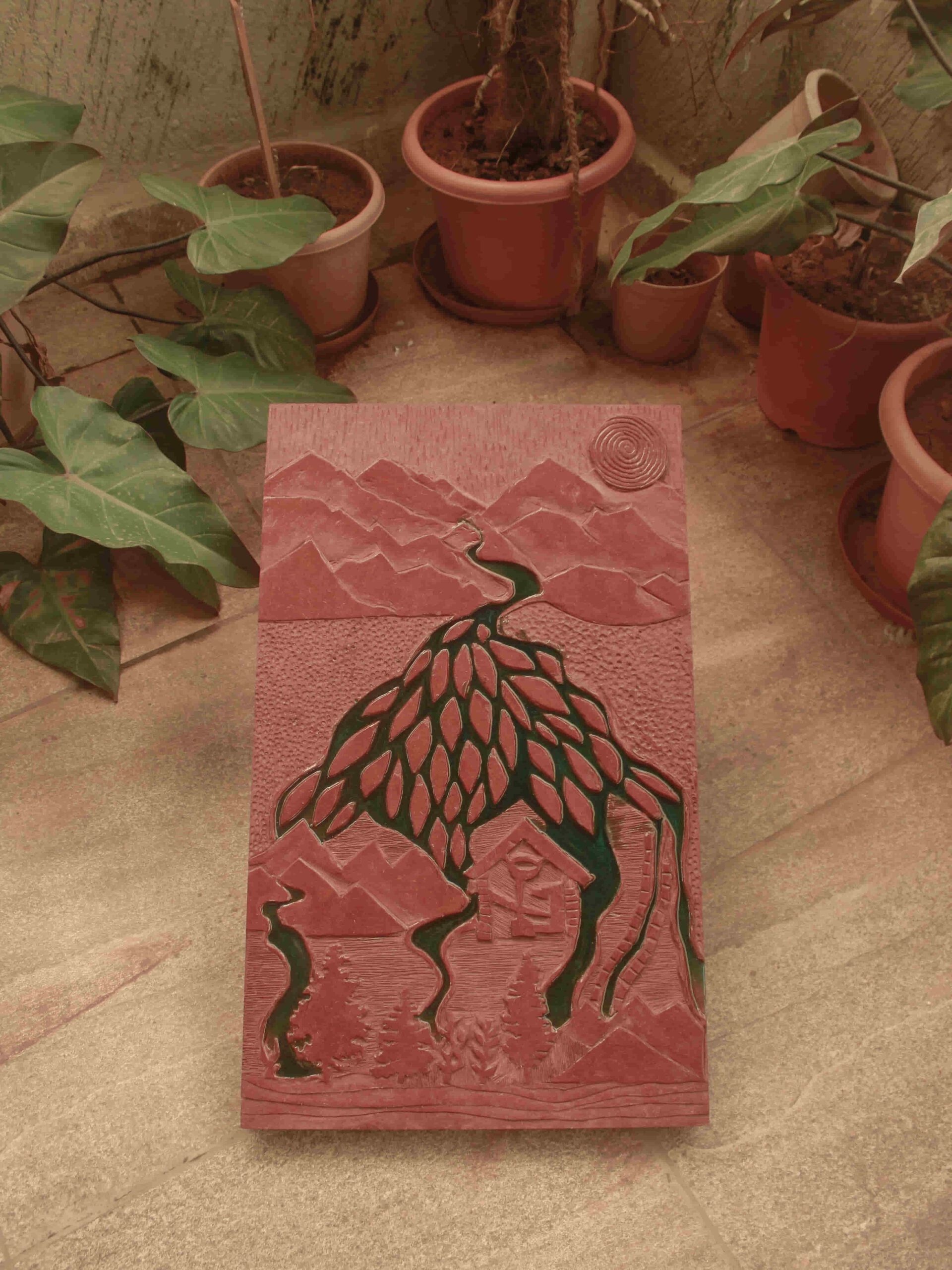
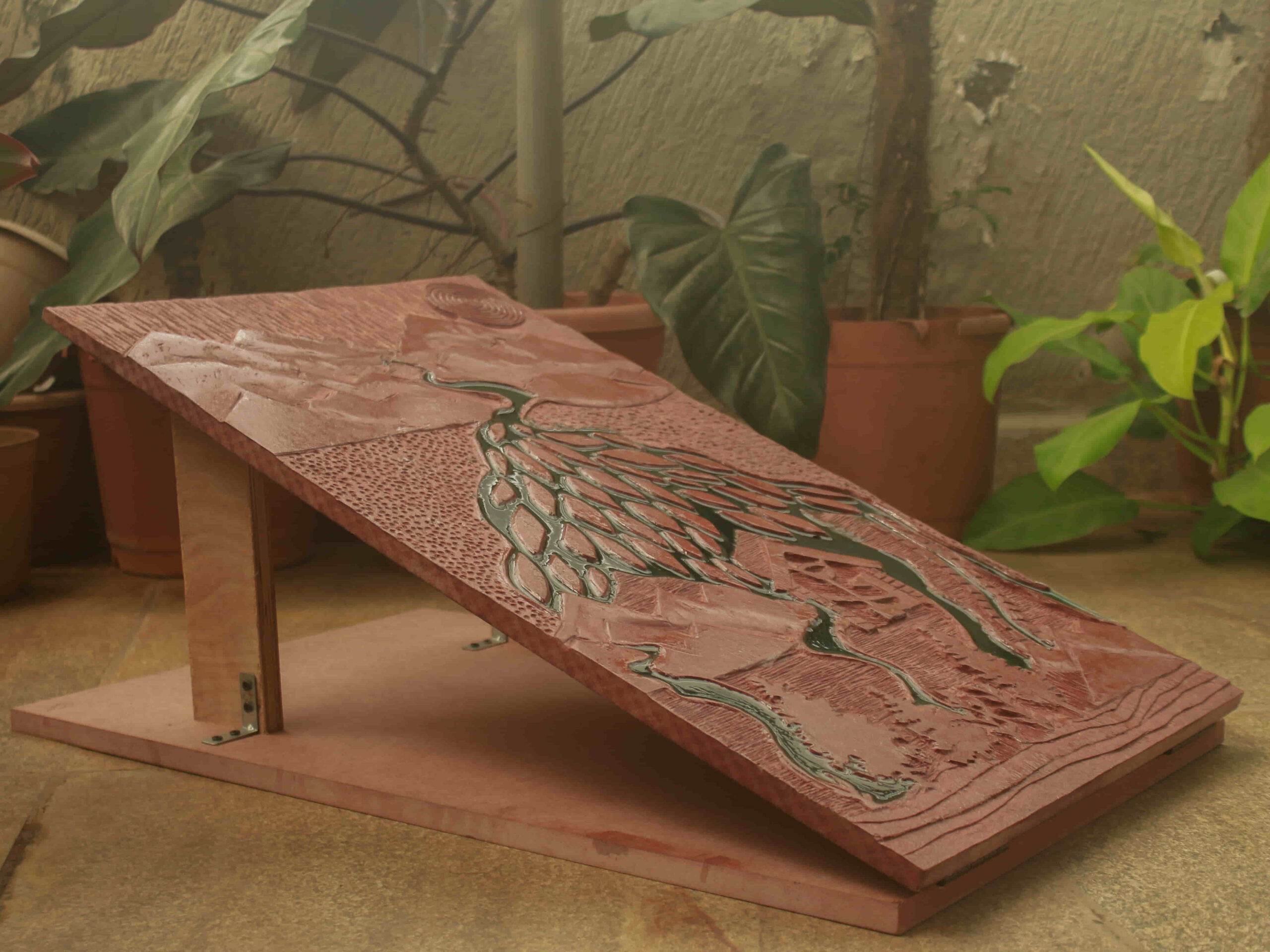
Margaret Atwood
Process
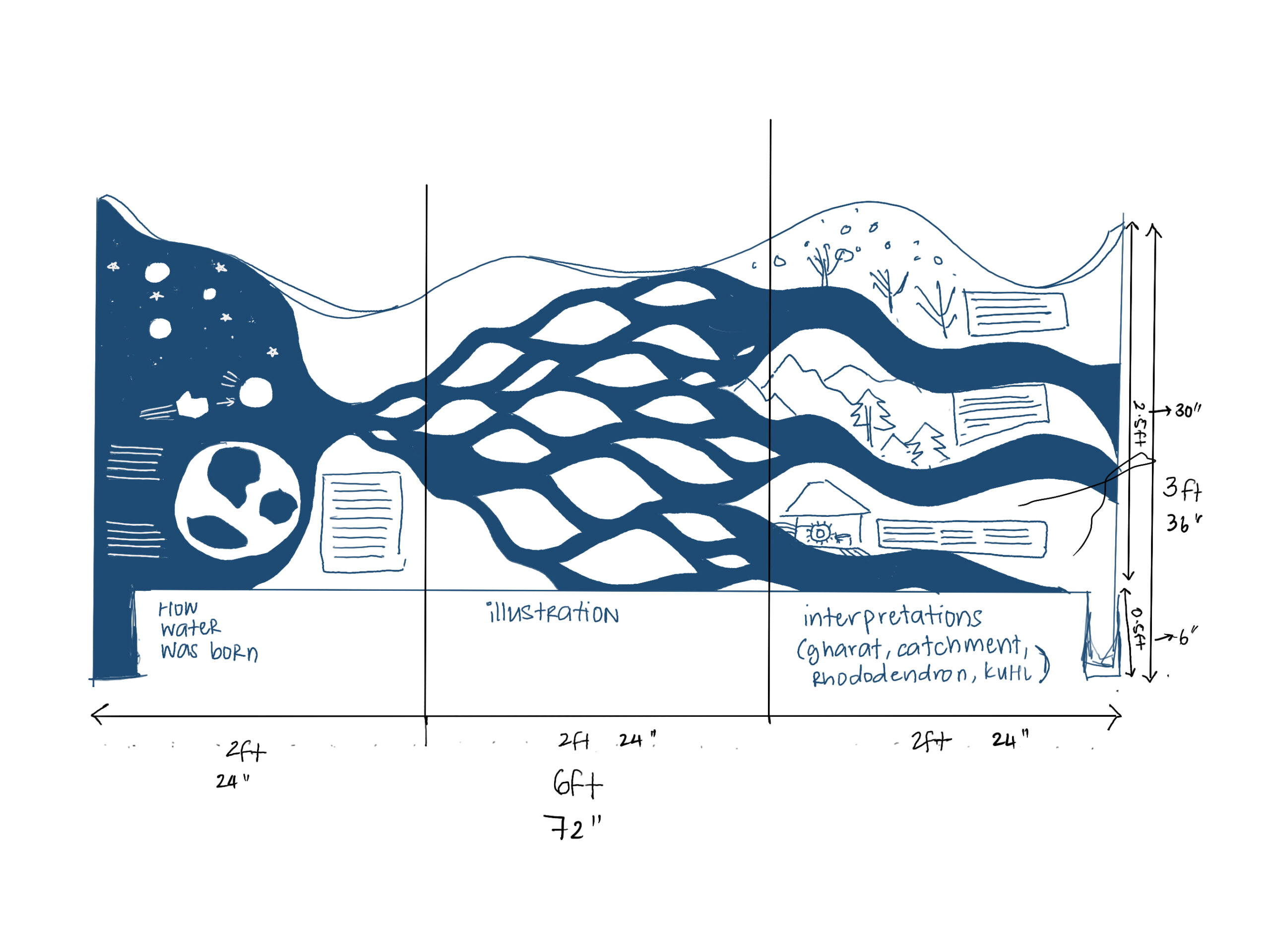

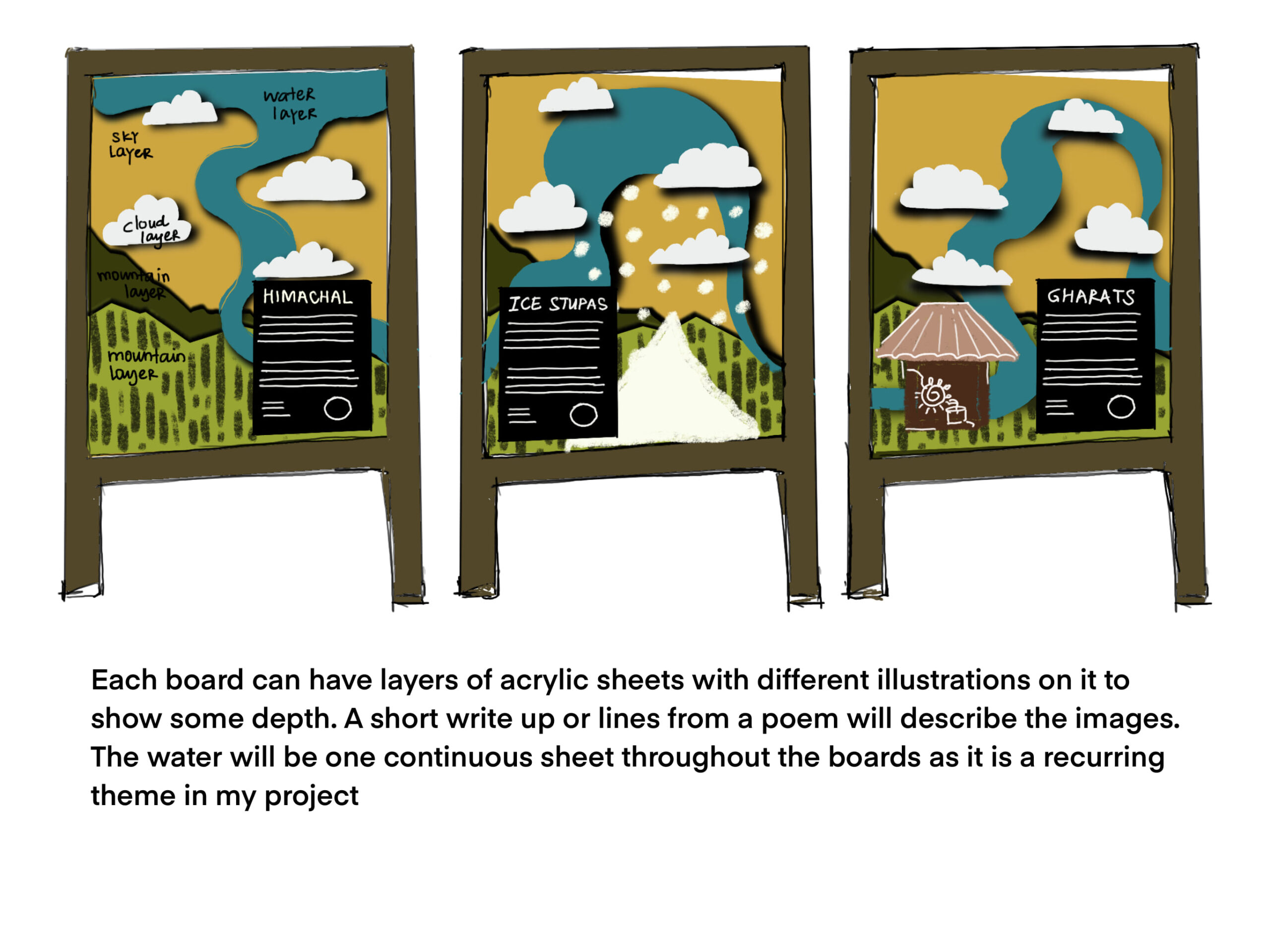
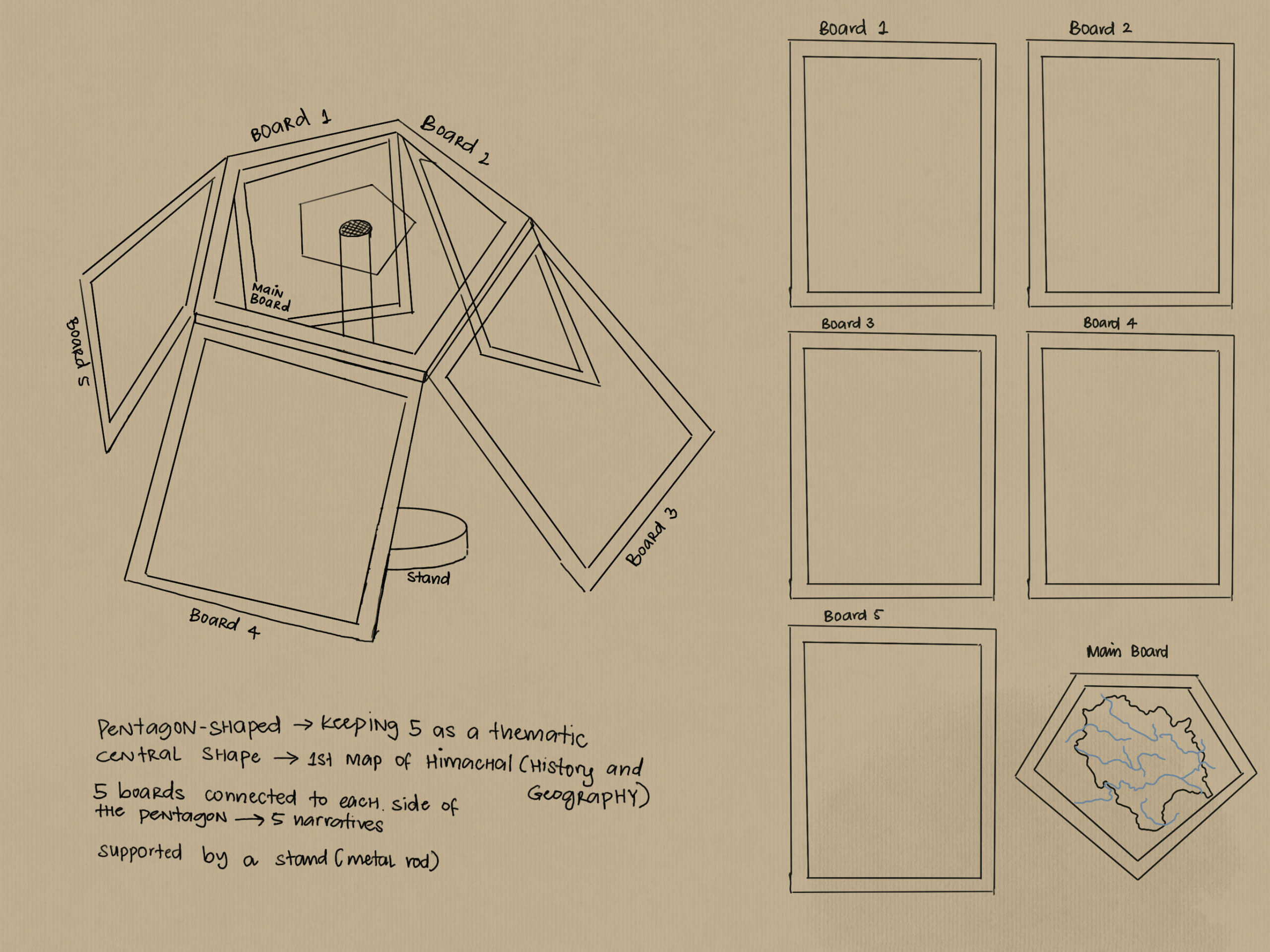
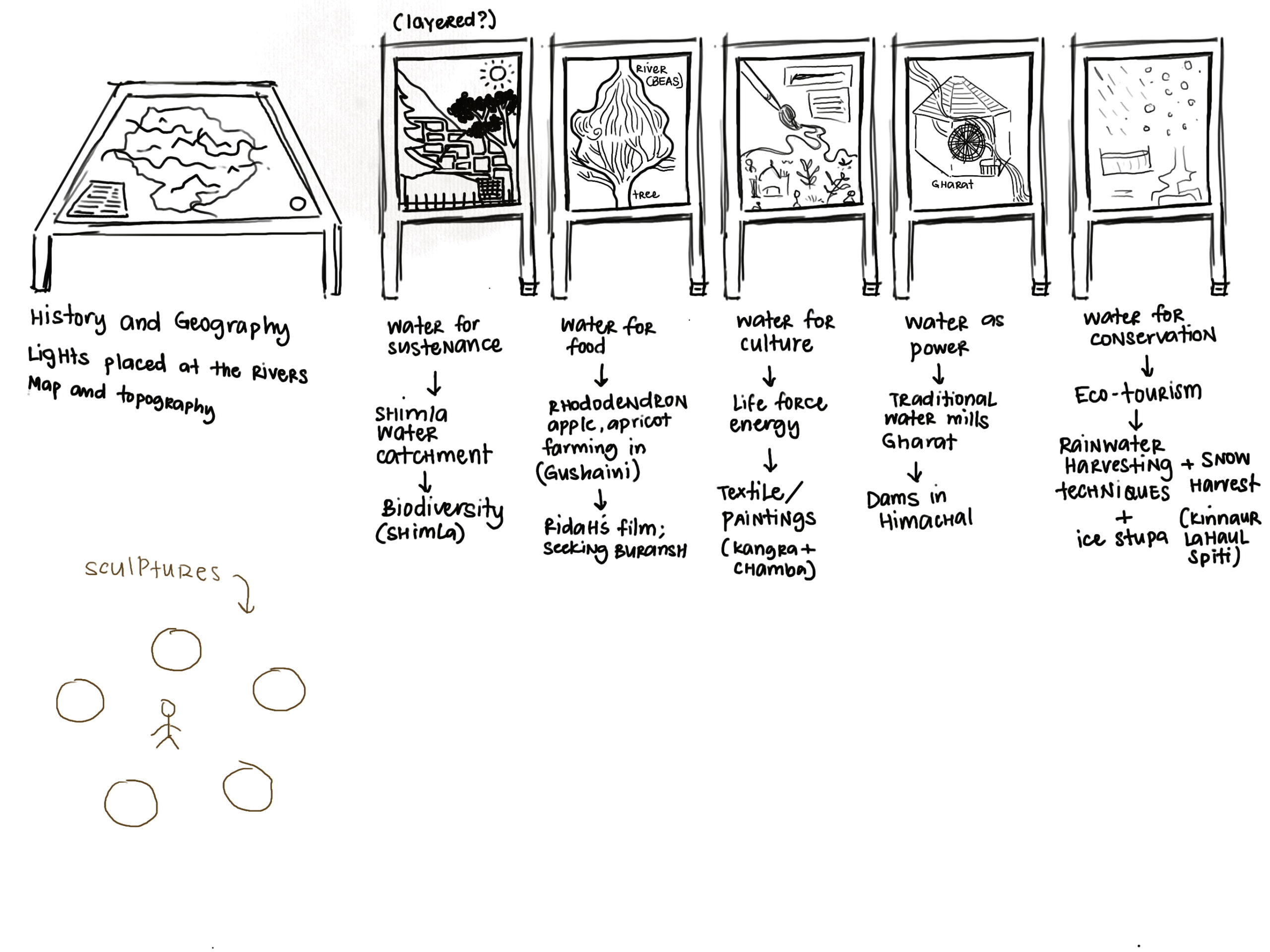
Proposal: Create an 8×4 ft illustrated board depicting water’s journey to Himachal Pradesh, emphasizing its uniqueness as Himalayan water.
Objective: Make the narrative engaging to highlight the distinctiveness of Himalayan water and encourage learning about its cultural significance.
Feedback:
Finalize the information to be included.
Simplify the initial story into concise facts or sentences.
Consider the narrative structure.
Define dimensions, materials, and user interaction with the board.
Proposal: Use multiple boards to break down the story or poem, with accompanying illustrations. Place boards at intervals for an interactive experience.
Feedback:
Consider publishing the story/poem instead of using boards.
Address bilingual aspects since the poem is in English.
Define the target audience for readability.
Development
The entire piece would be hand carved, to give the feel of 3D relief. The river flows to the bottom of the board, where it is interpreted with 3 ideas, the Gharat for power, the Kuhl system for livelihood and the forest for biodiversity. I decided to support the installation with an infographic board, explaining further how water is interconnected with the culture of Himachal Pradesh. The details for dimensions and material are below:
• To-scale Installation size: 7 x 4.5 ft (2” thickness)
• To-scale installation material: Cement or NFC Board
• To-scale metal frame size: 3 ft height on one end, the other end touching the ground
• To-scale metal frame material: Aluminium square rods
• To-scale infographic board size: 2 x 2 ft (2mm thickness)
• To-scale infographic board material: ACP sheets
• Scaled-down prototype size (1:3): 2.5 x 1.5 ft (17mm thickness)
• Scaled-down prototype material: Waterproof exterior grade MDF board
• Scaled-down frame size (1:3): 1 ft height on one end touching the ground
• Scaled-down frame material: Plywood
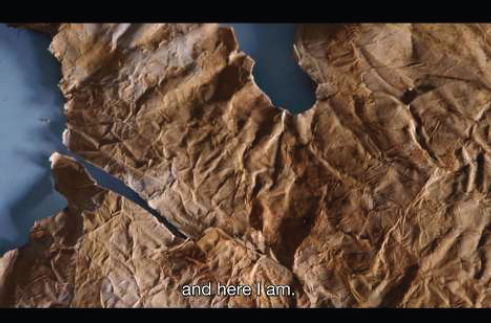
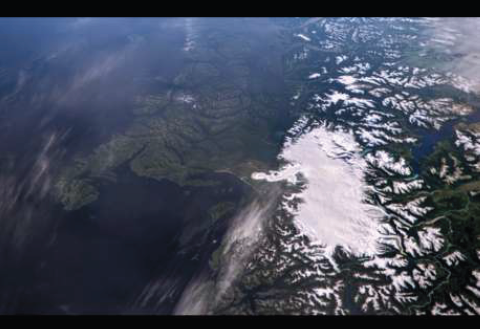
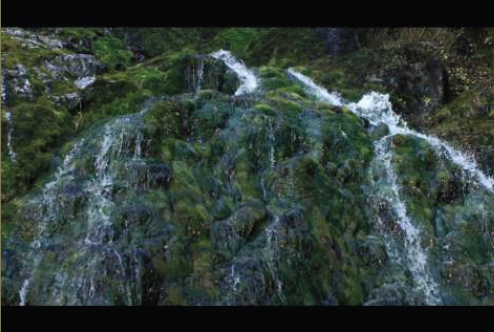
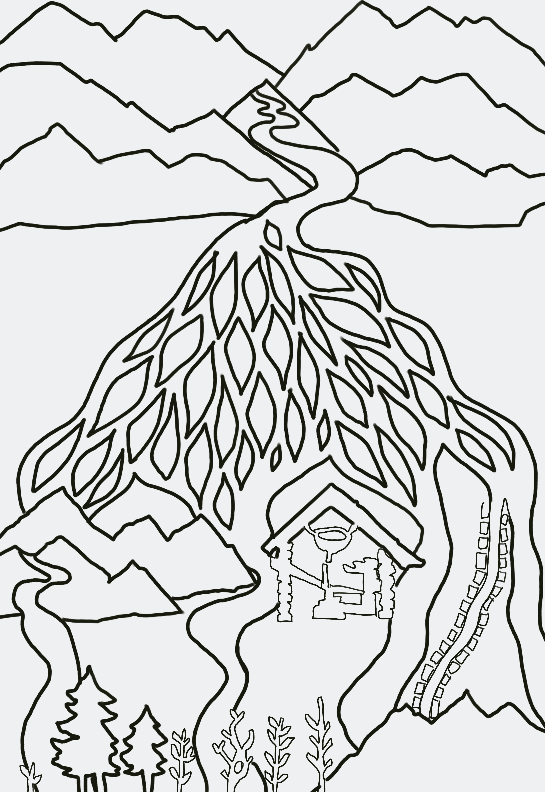
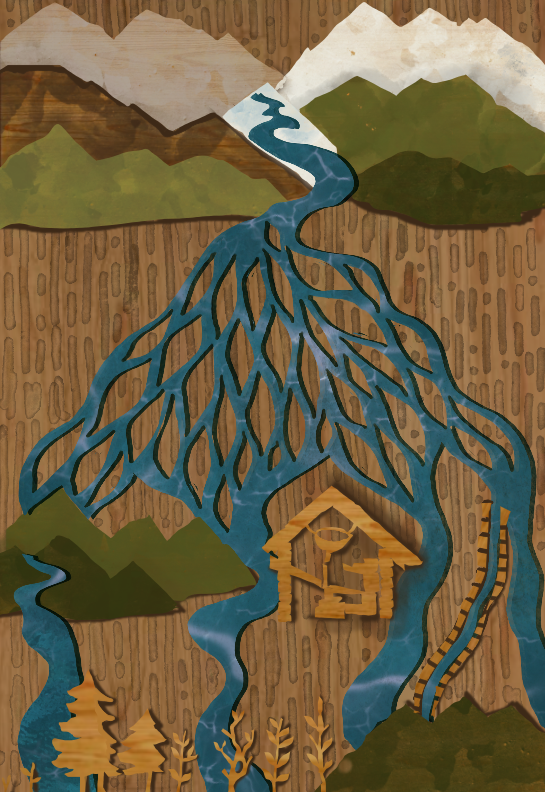
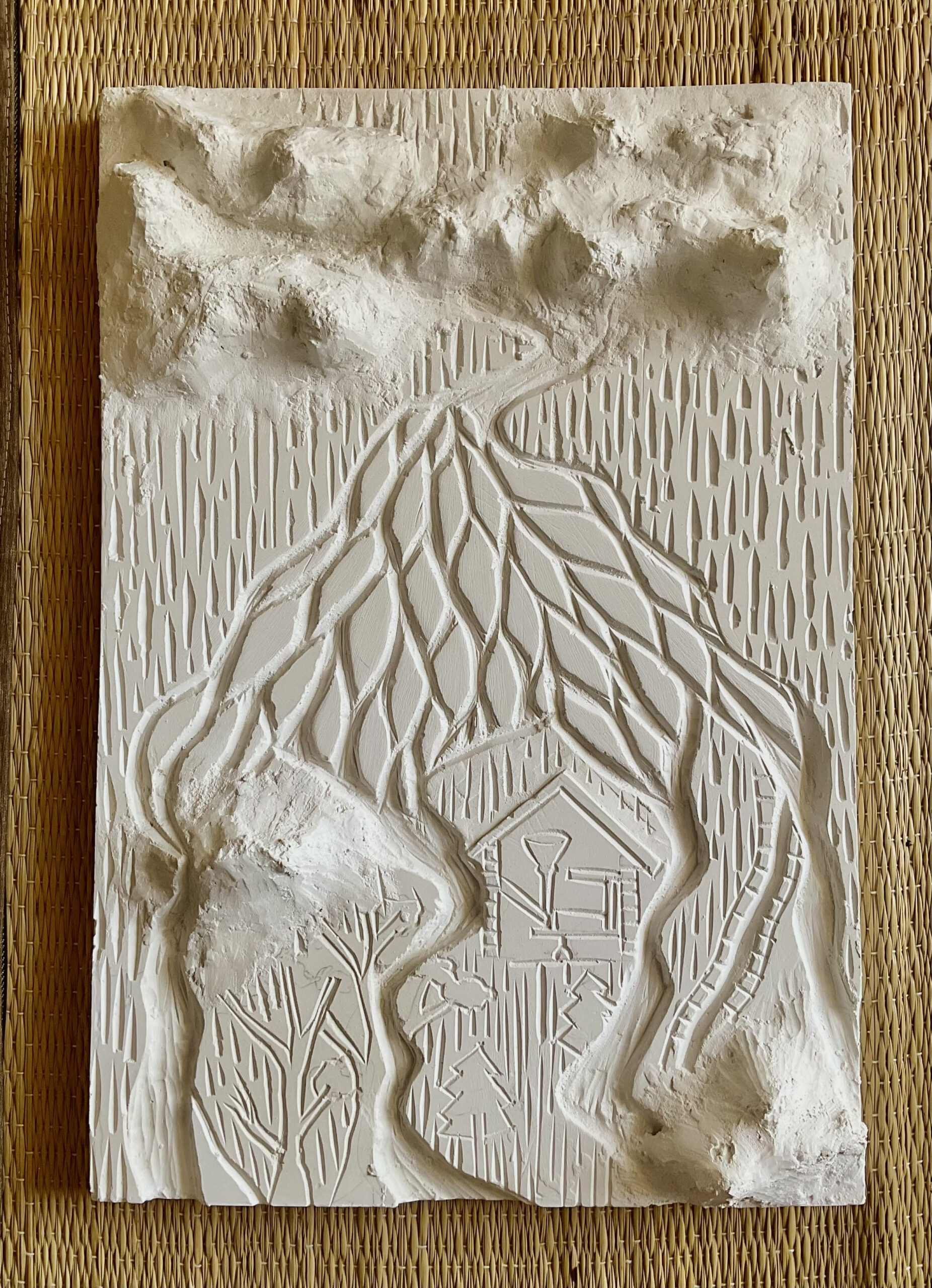
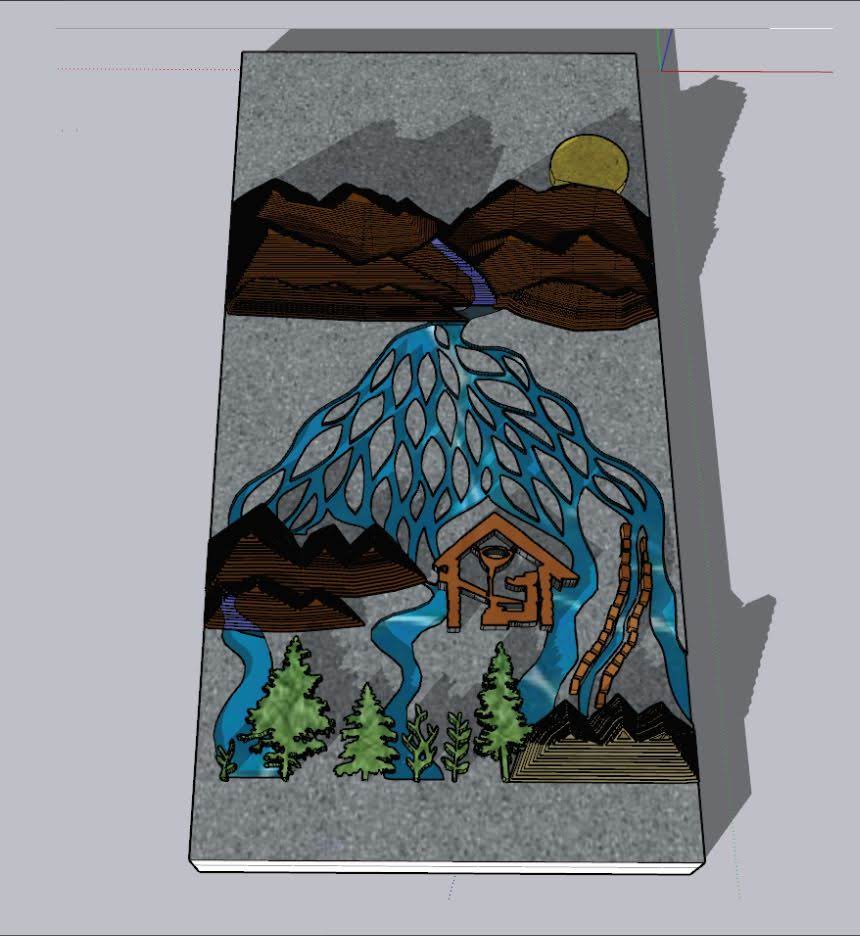
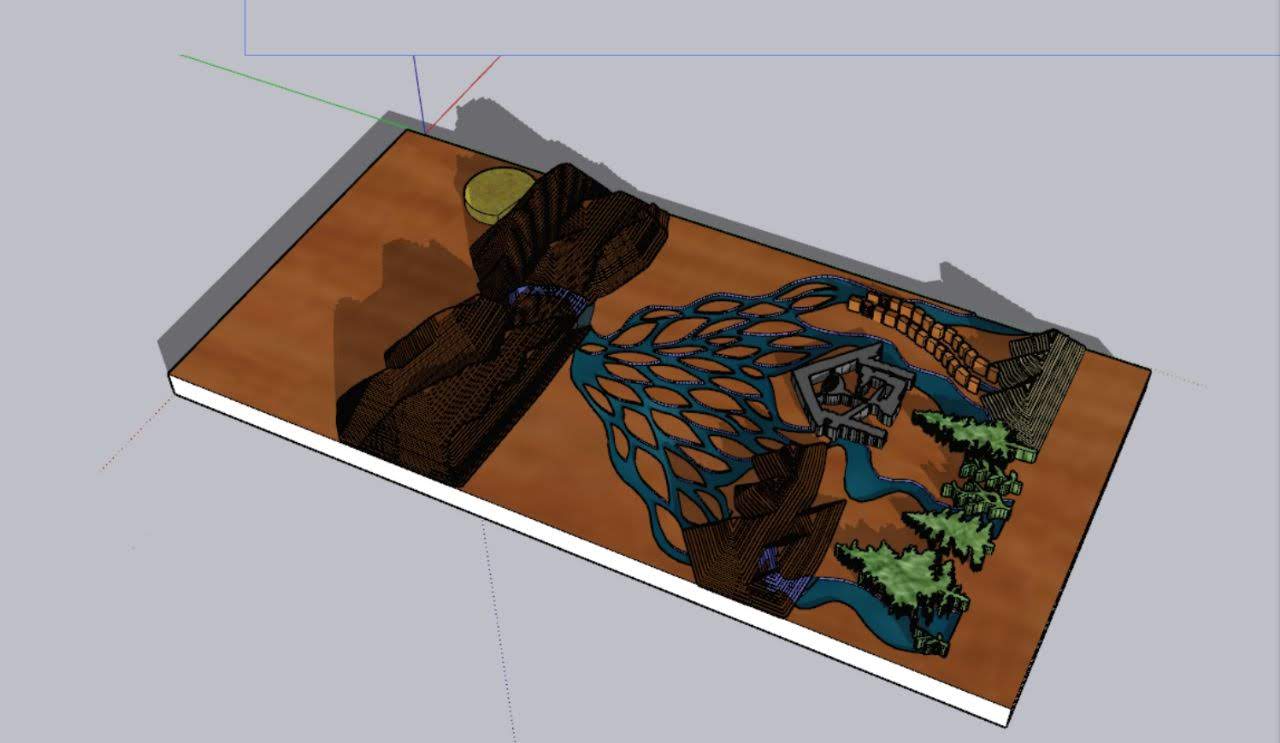

• Source my wood from a shop and cut it into the desired dimensions + a supporting frame which holds the installation at a height of 2.5ft from its highest point towards the ground. The entire board will be supported on another board of the same size. The thickness of the wood must be around 1 inch to facilitate the carving. MDF board seems to be the easiest to work with given the time and availability of material
• Carve out the basic water form which flows through the entire wooden piece.1 or 2mm thicker than estimated to accommodate the resin. Either hand-carved or CNC cut
• After the carving is done – plane the opposite side of the board and make sure it is completely straight
• Apply a thin coat of PU varnish in the grooves to prevent seepage through the wood and let it dry
• Pour a resin layer into the water carving and plane and level the wood with the resin. Sand the surrounding elements if required
• Attach blocks of wood for the mountains and the cultural elements and carve out the desired shapes
• Create the frame which holds the installation in place at the desired heights (need to think about whether to use metal or wood for this supporting structure). The height range will be 1.25 ft to the ground
• Sanding of the external elements
• Attaching the prototype to the frame for support
Final Product
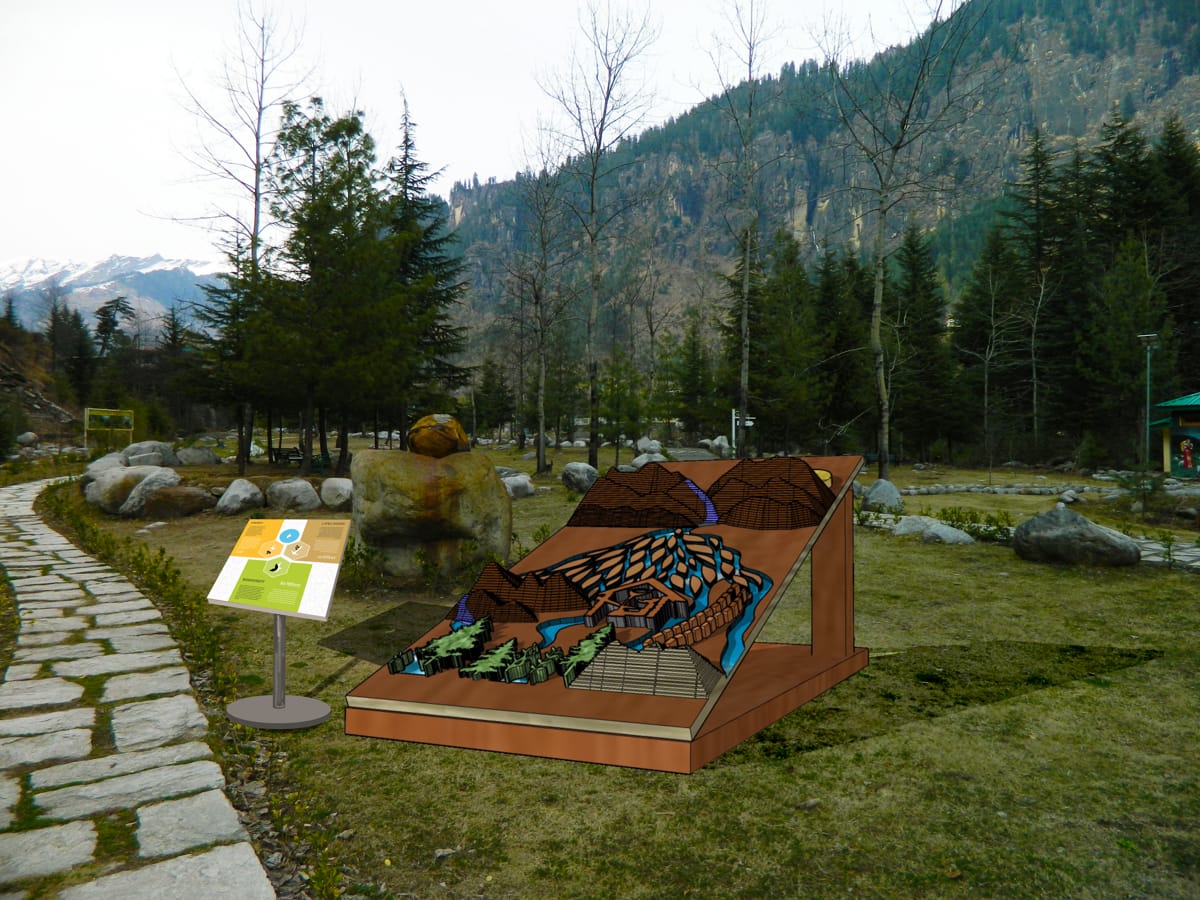




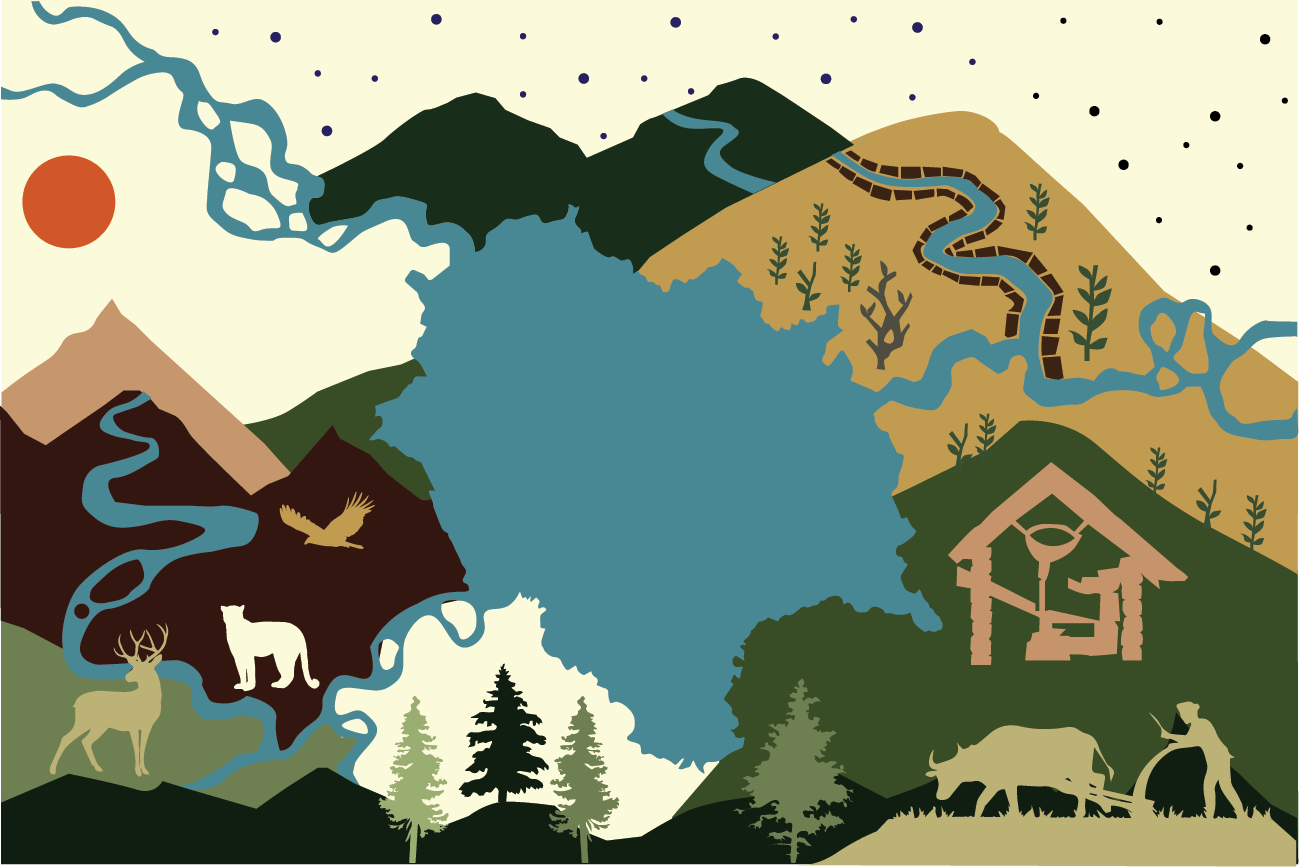
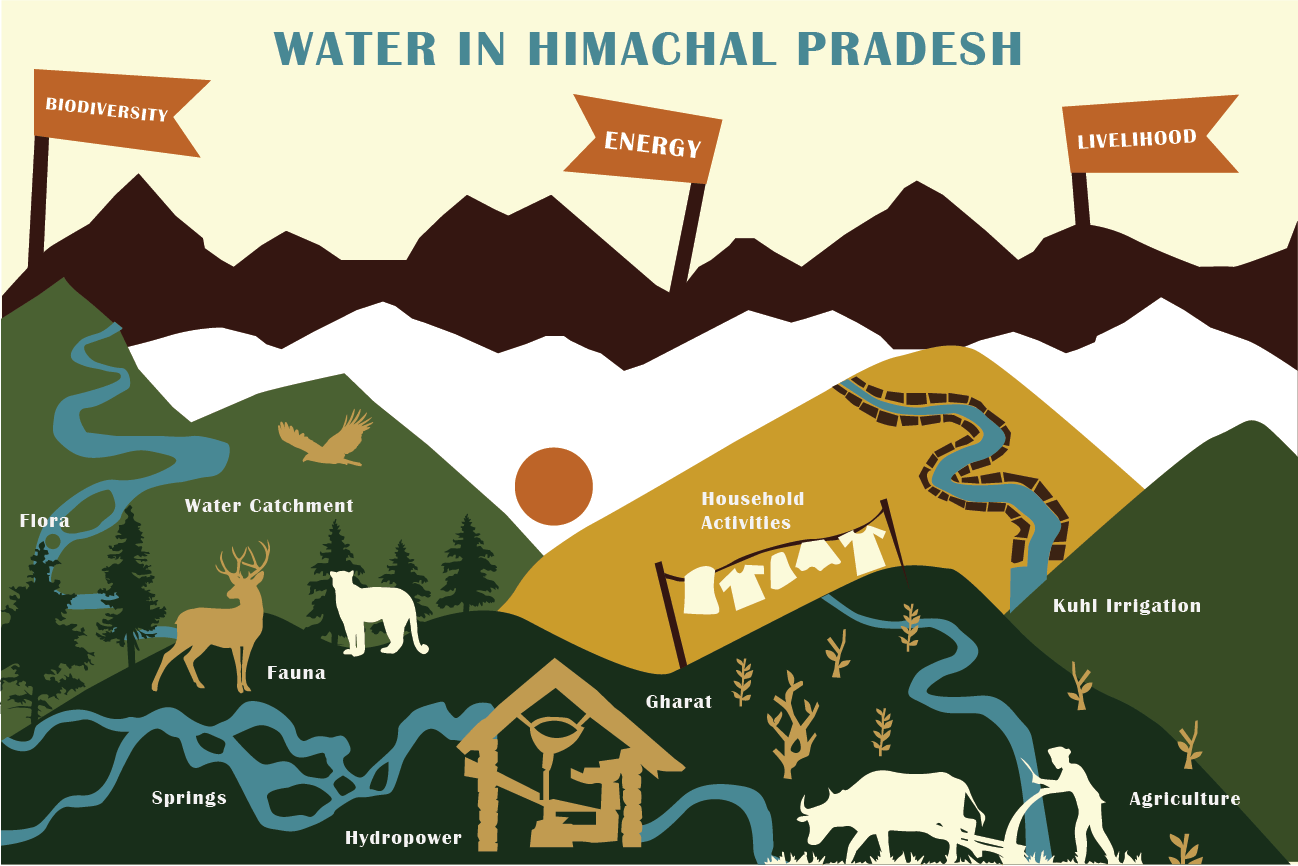
Of Hima in white and Achal in blue
Tasked the girls to meet their extended families
And discover their brilliant activities
First stop was at Shimla Kumar
Father’s brother who lived quite far
Shimla chacha he was dearly called
He was tall and handsome and a little bit bald
Generous and gentle, his jalgrah was filled
With water and love for the town that was built
Snow leopards, western tragopan and
the rhododendron trees
Quenched their thirst while enjoying
the breeze
Next stop was high in the sky
Following the Jujurana fly
To the home of Father’s sister Gushaini Bua
A peachy lady with a biodiversity diploma
Smelling of sweet jam and spicy pickle
Buransh in hair and in her hand the sickle
She tells us that her apples are sweet
And her apricots are a delicious treat
Mother’s brother and a favourite of Papa
His water channels or Kuhl
Were meandering and full
Irrigating the green fields
That gave a bountiful yield
Contributing to the farmers’ livelihood
Kangra Mama’s work is selfless and good
Gharat masi was next in line
Mother’s sister was a favourite of mine
The rivers in her course
Have tremendous force
Powering her to churn grain into flour
By generating ample hydropower
The water mills are now named after her
Indigenous and genius as she were
Hima and Achal were blessed to see
Their families contributing tremendously
They are organic and essential
Together they are the Pradesh of Himachal
